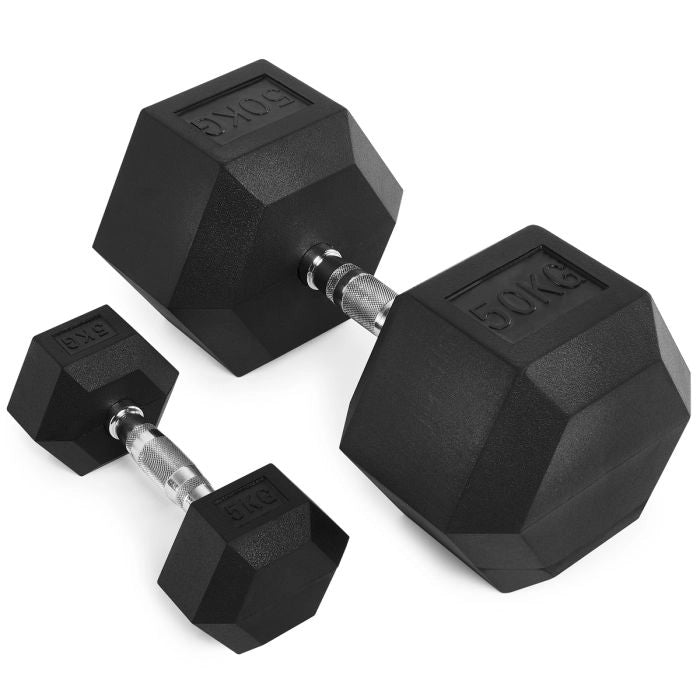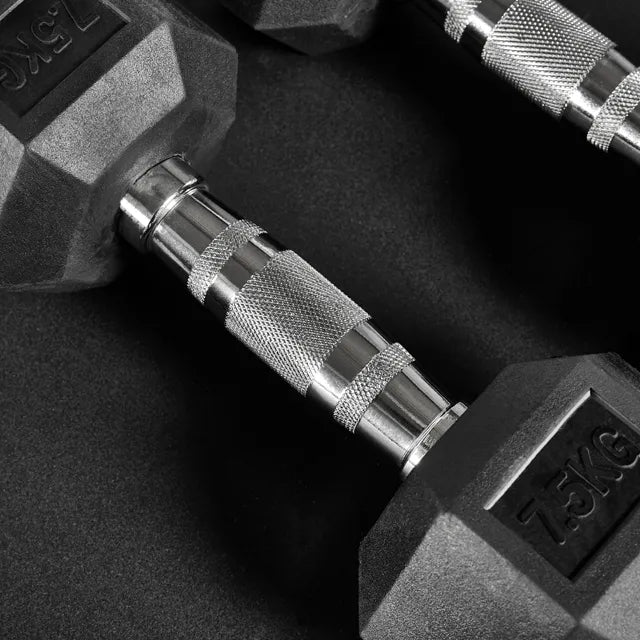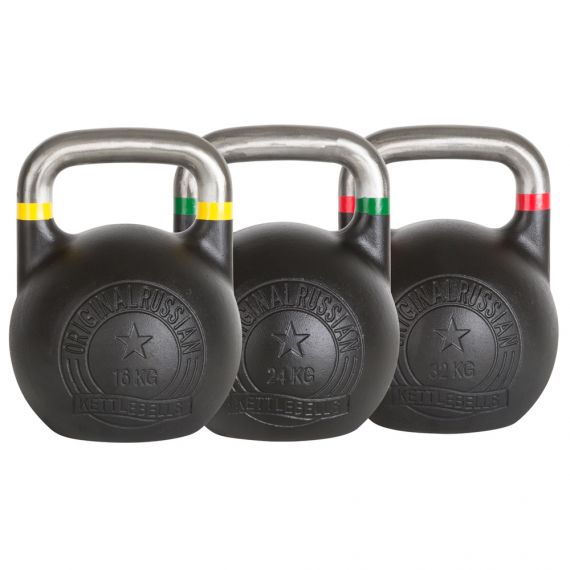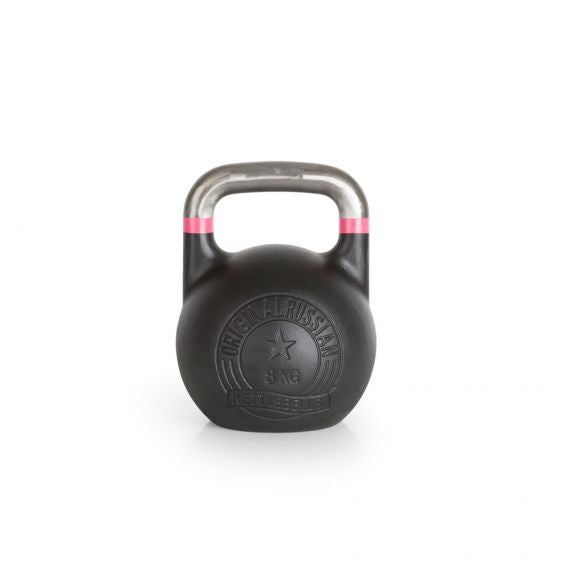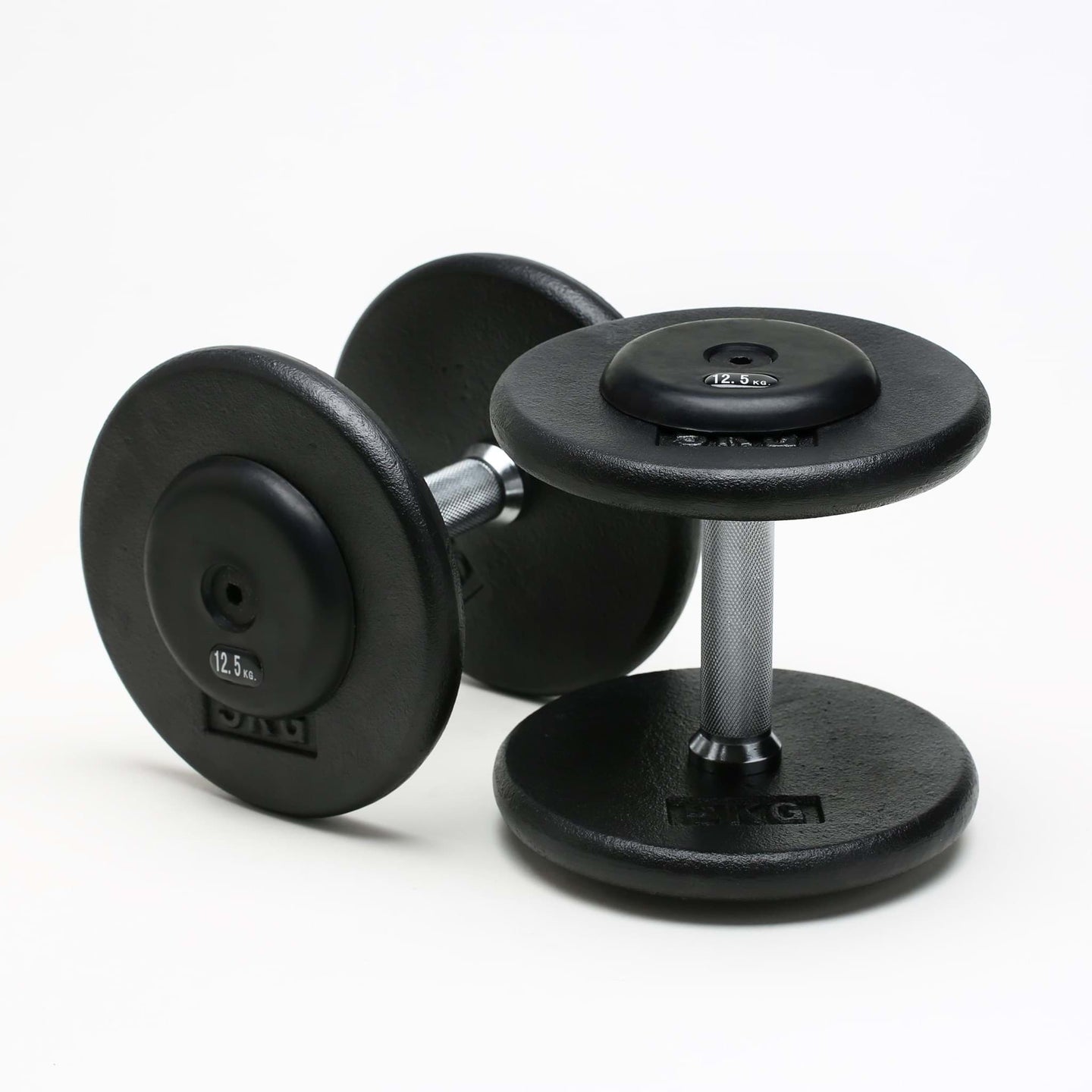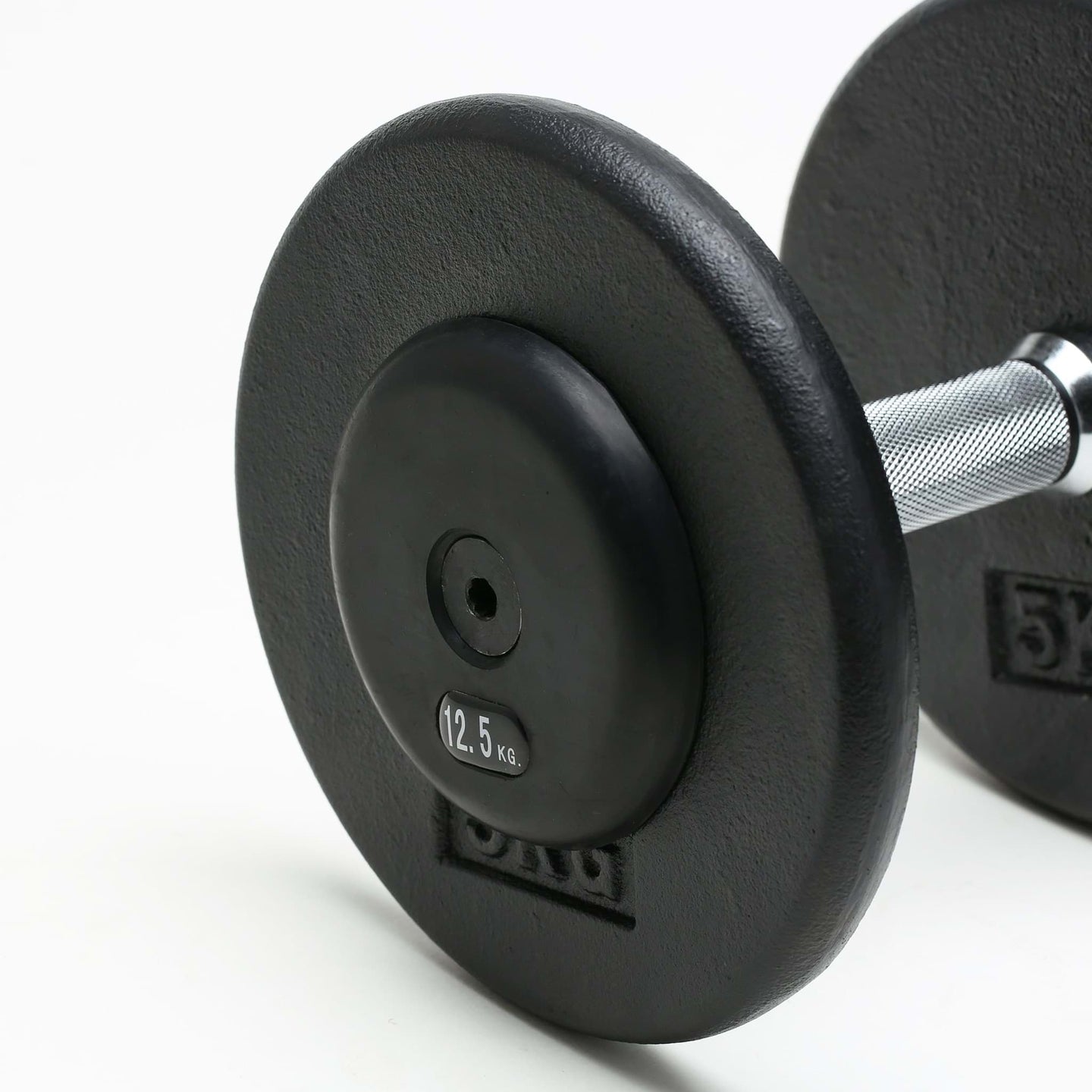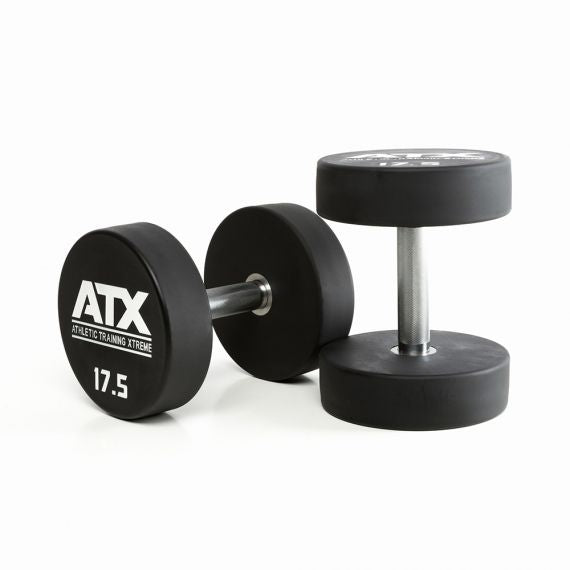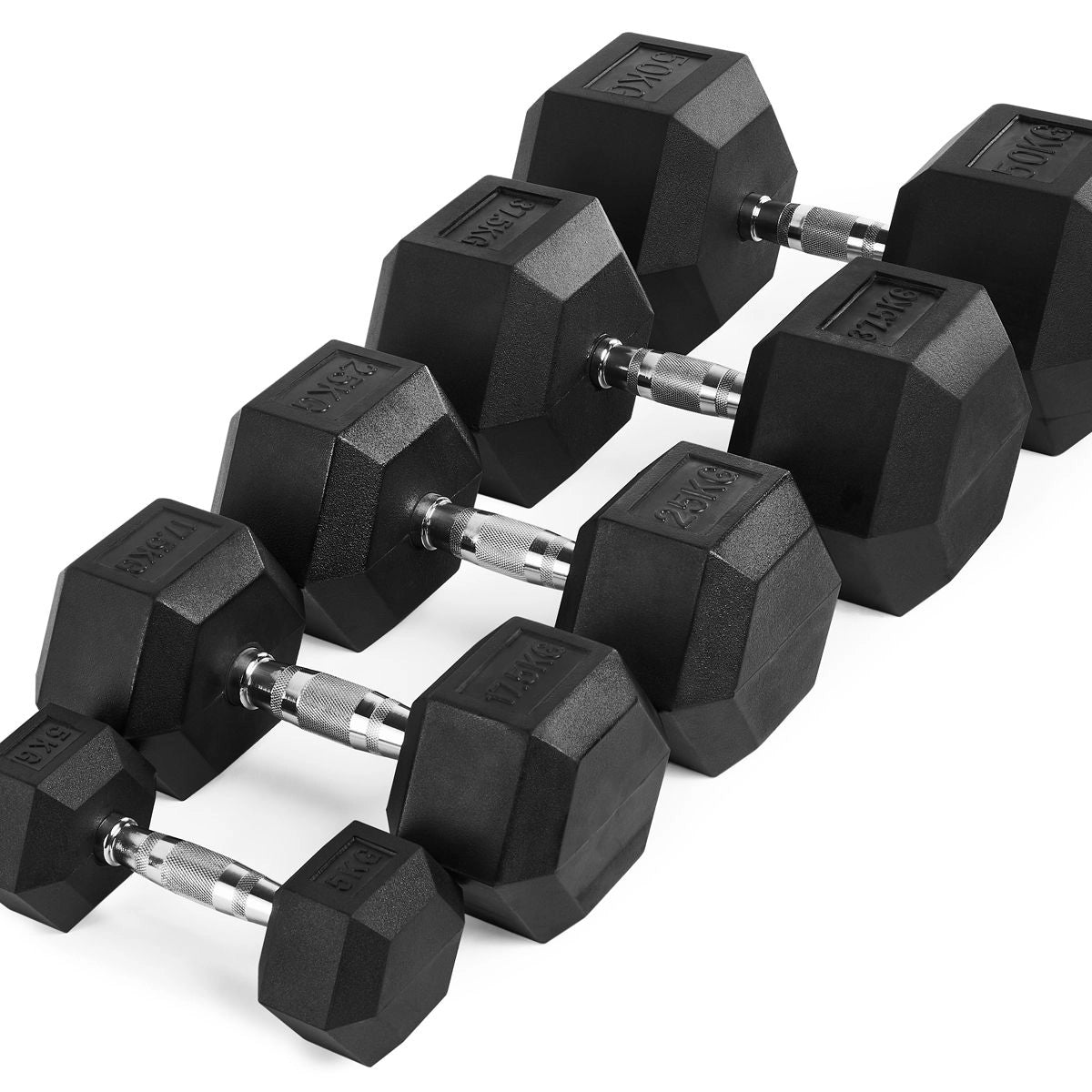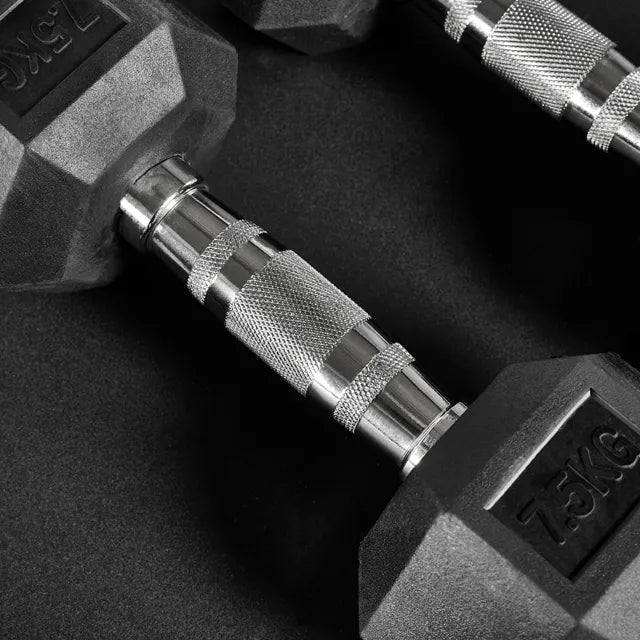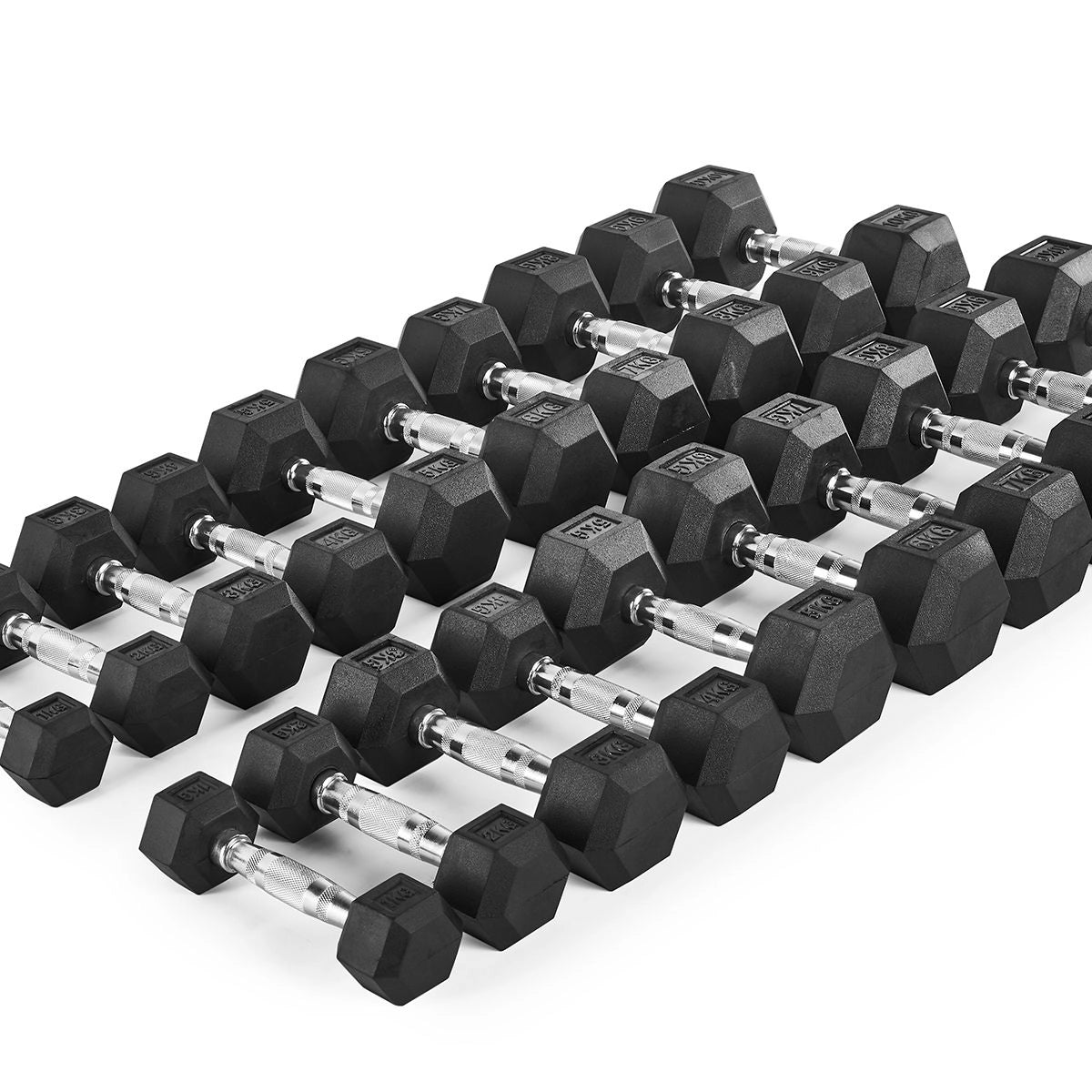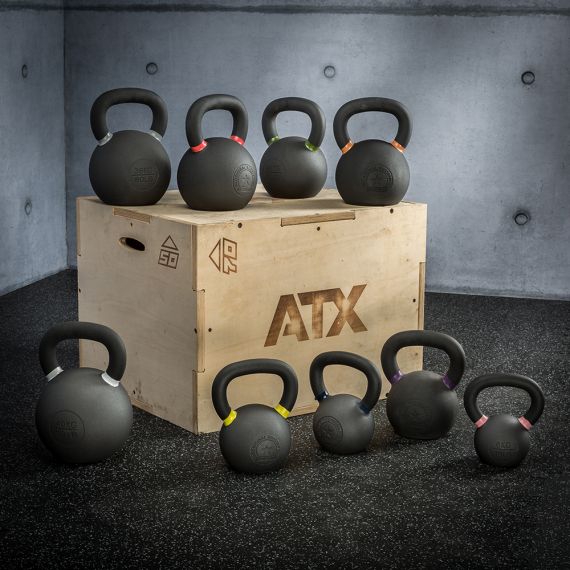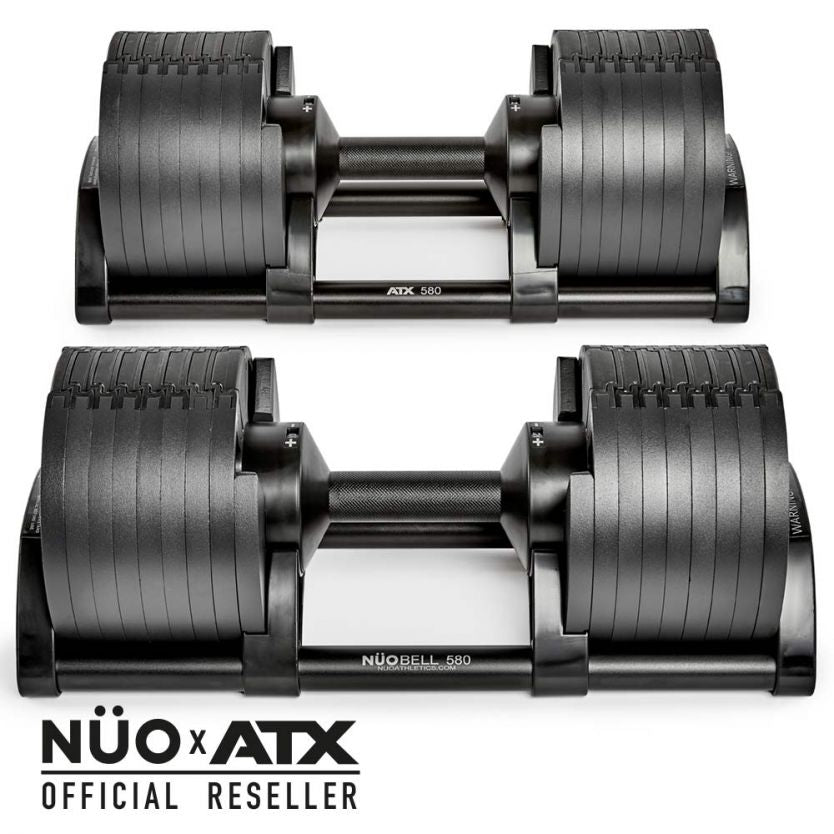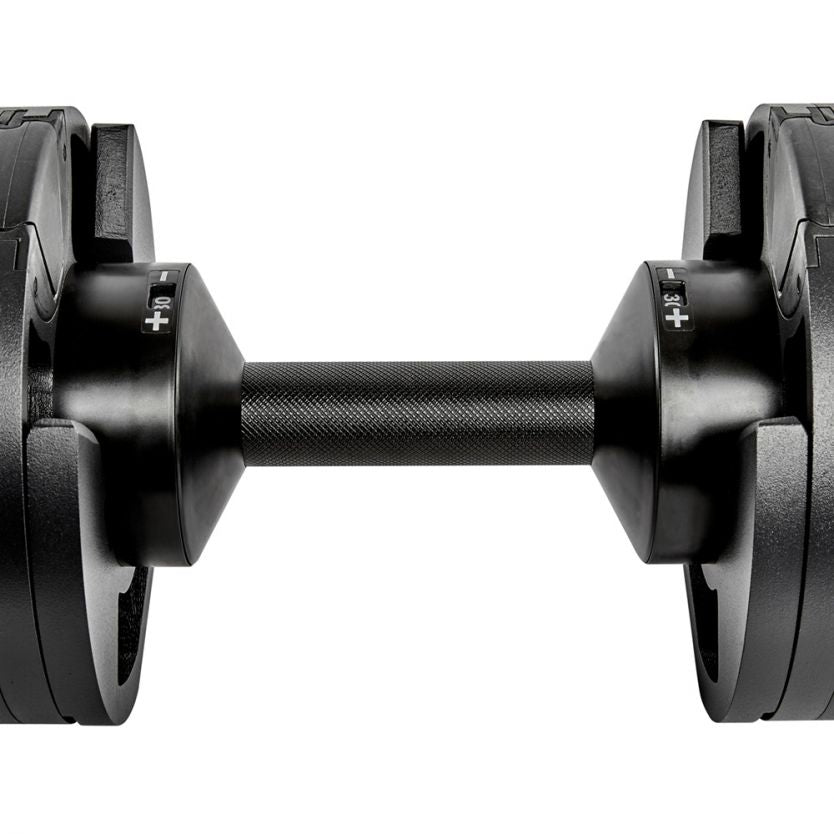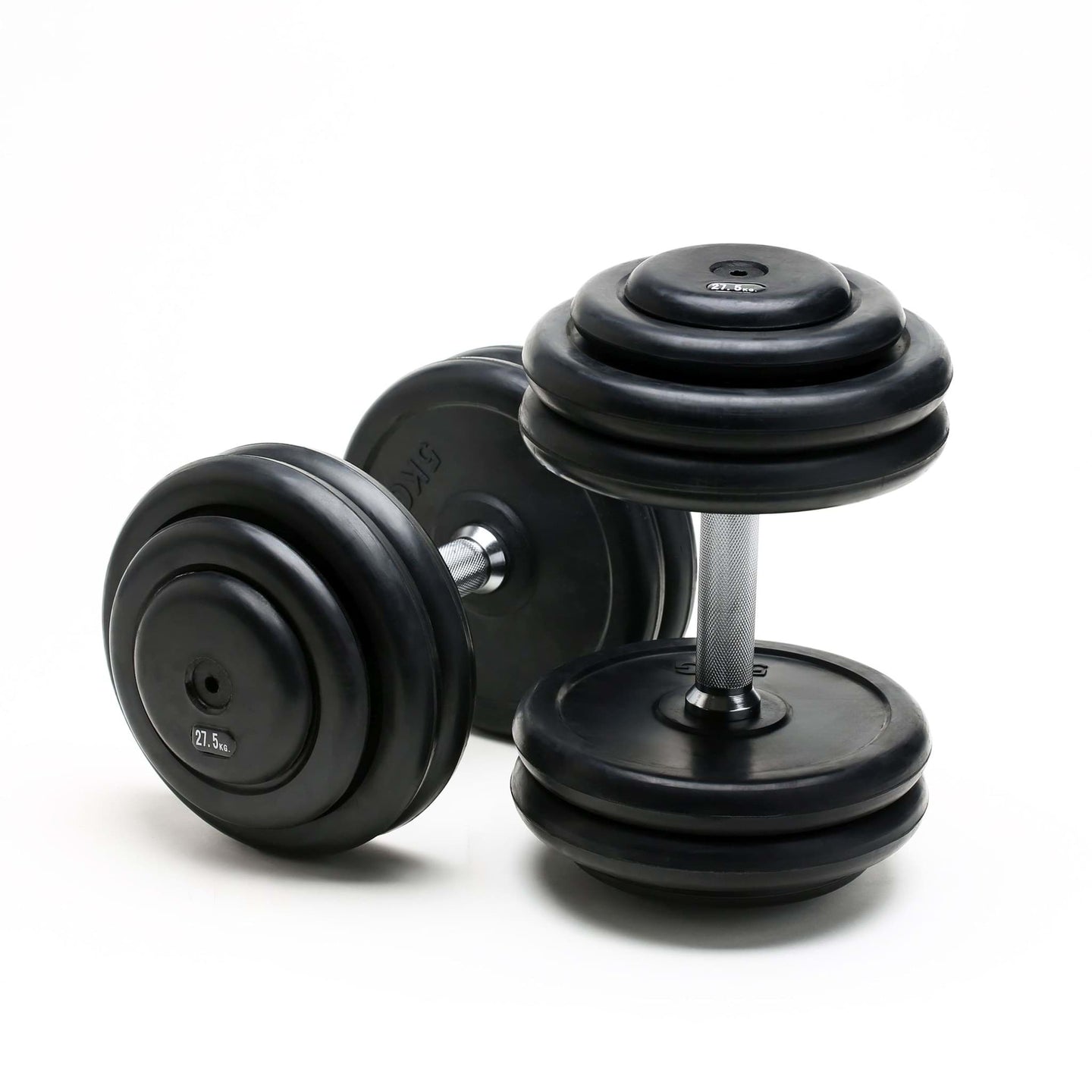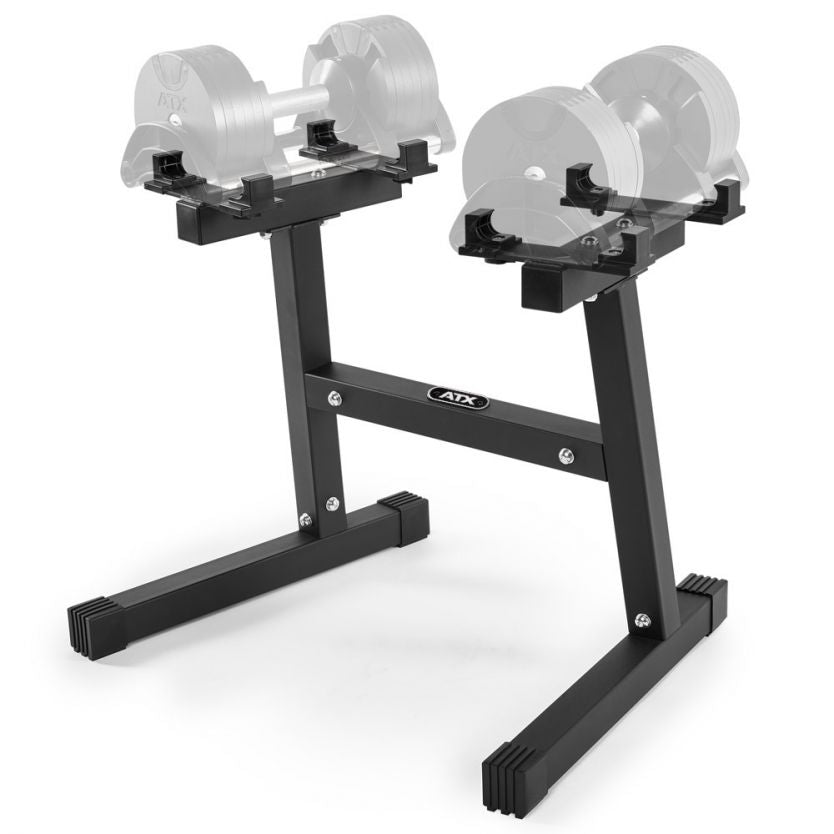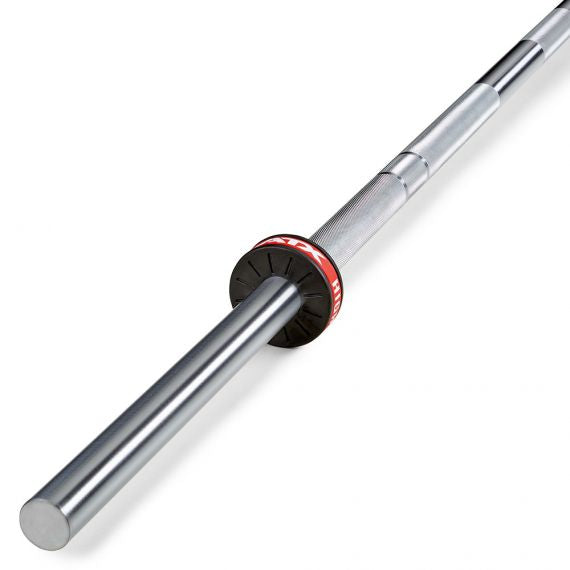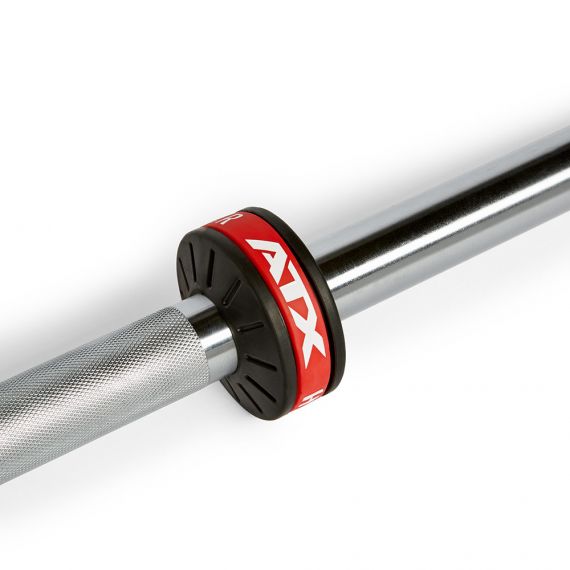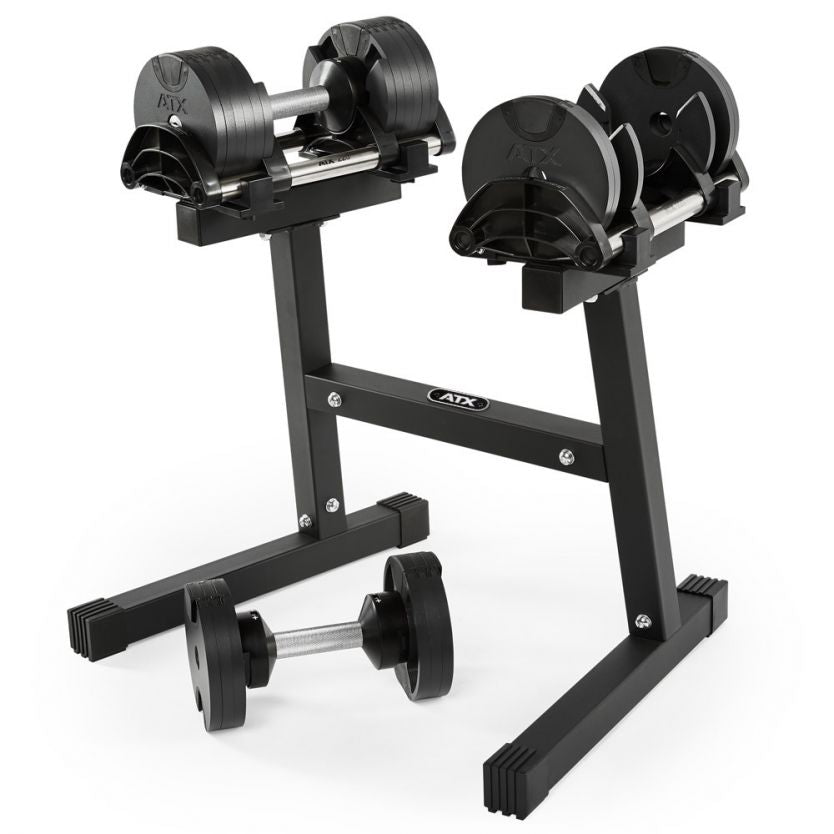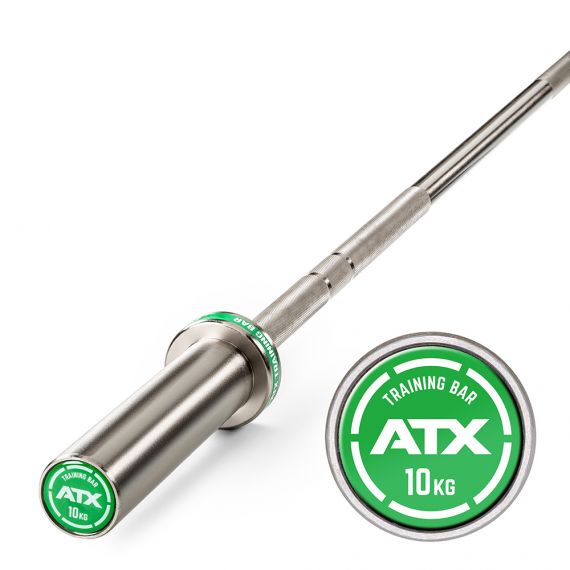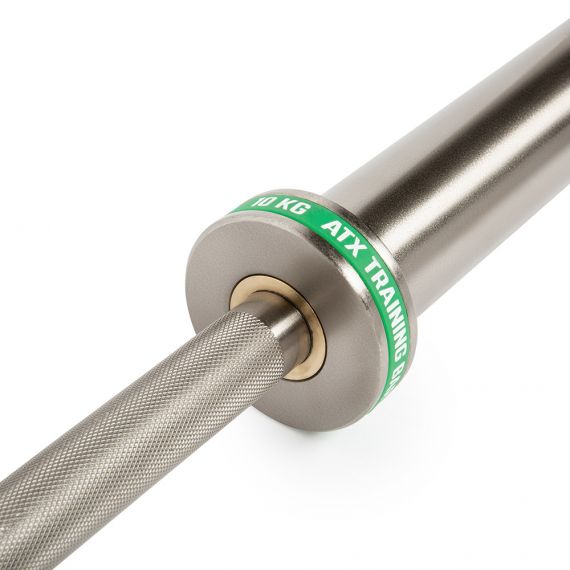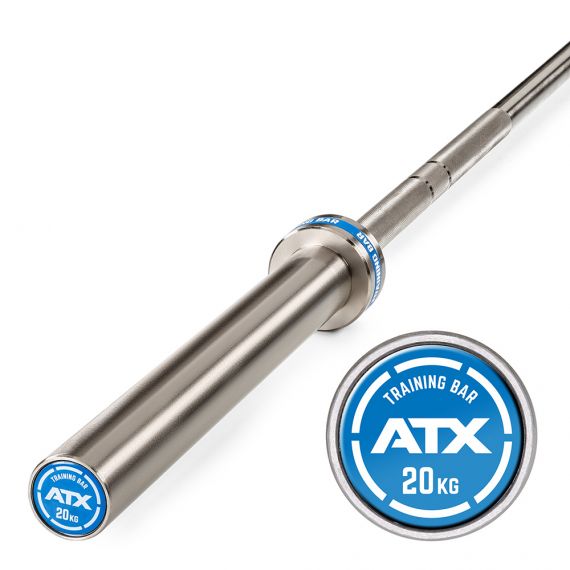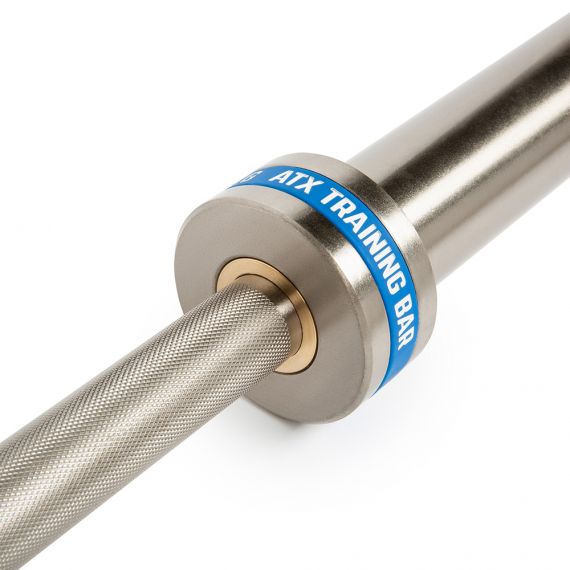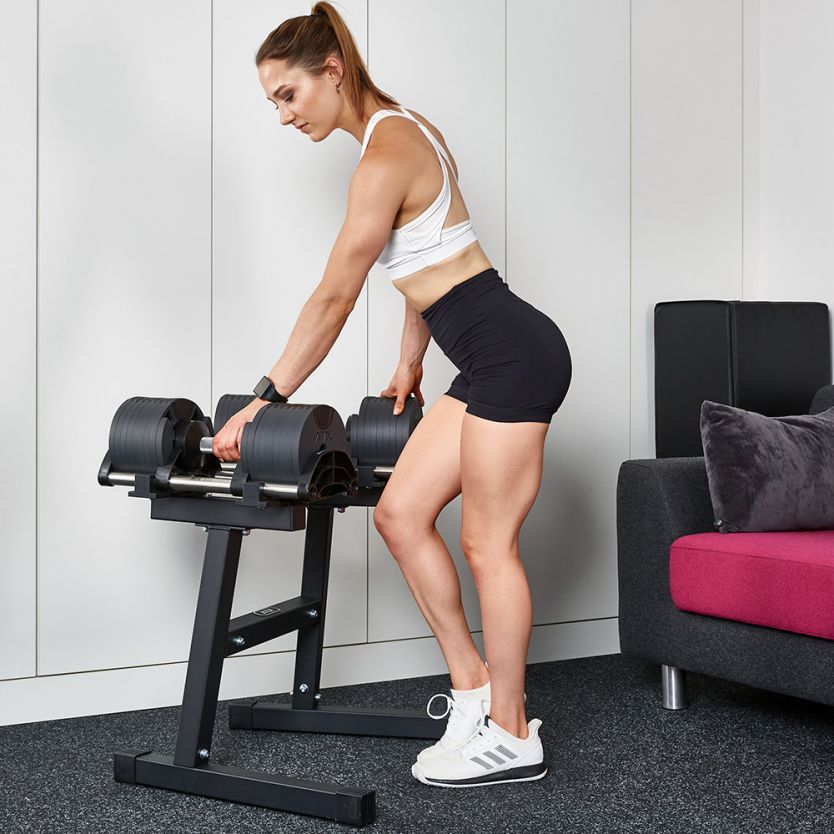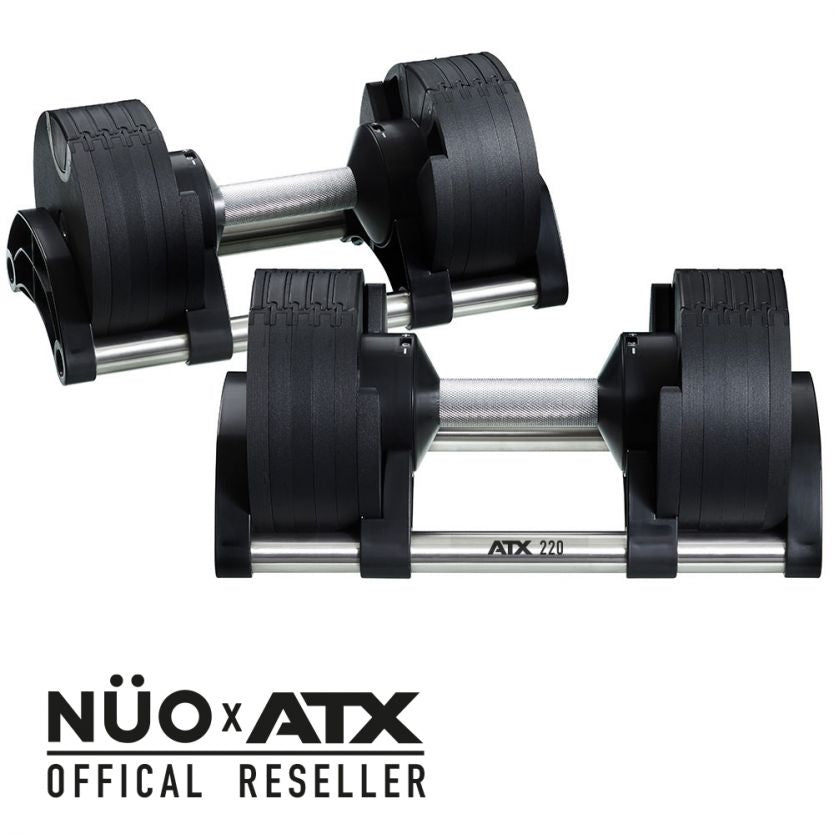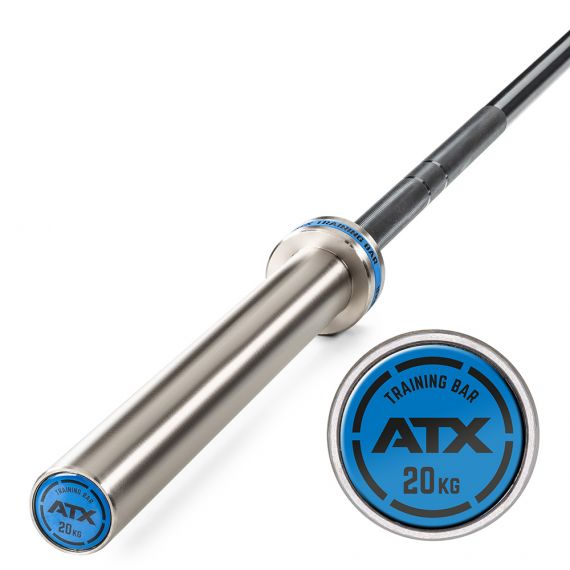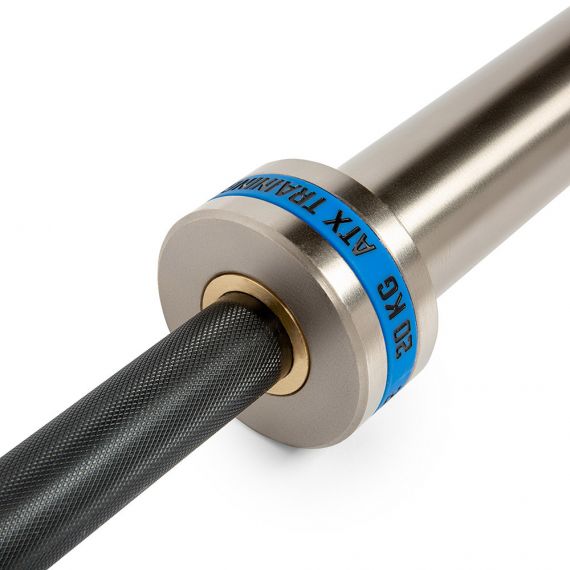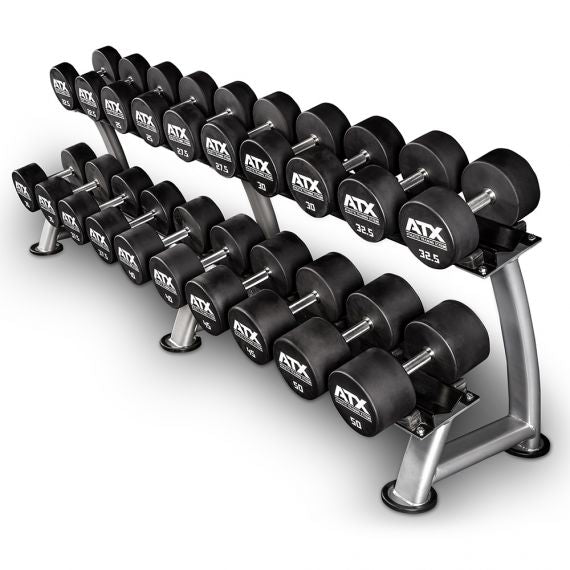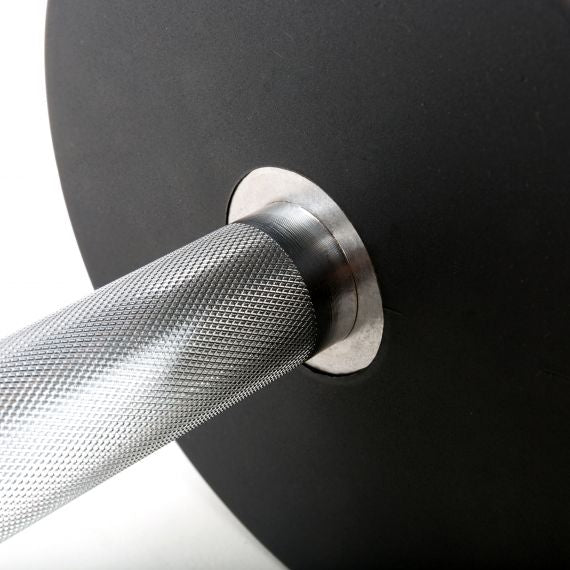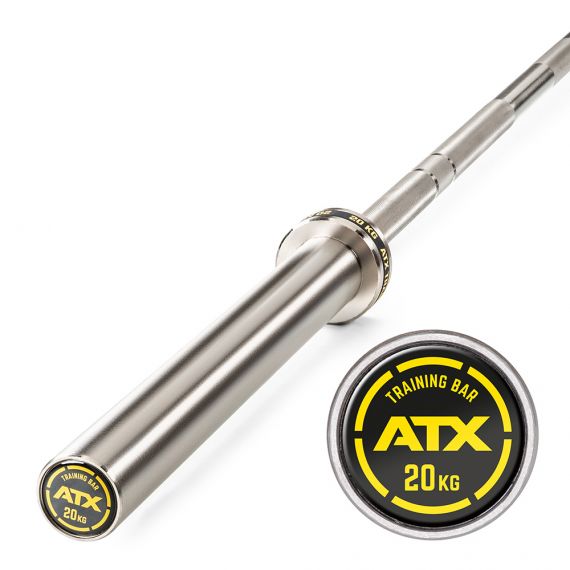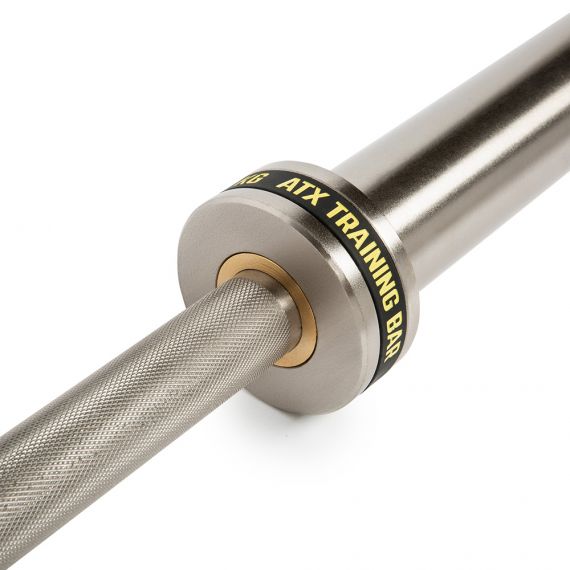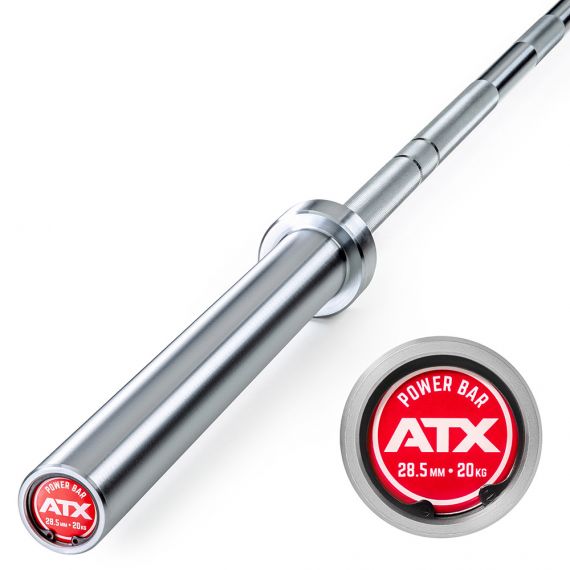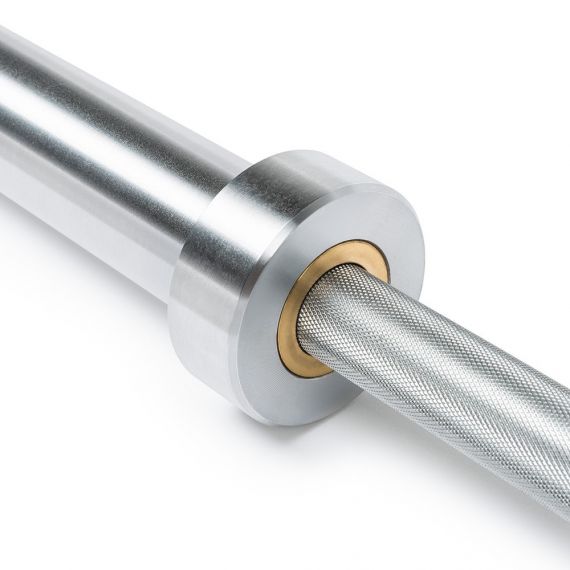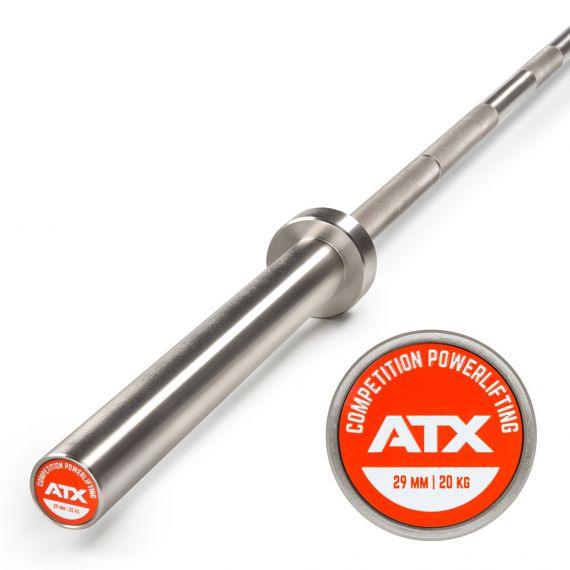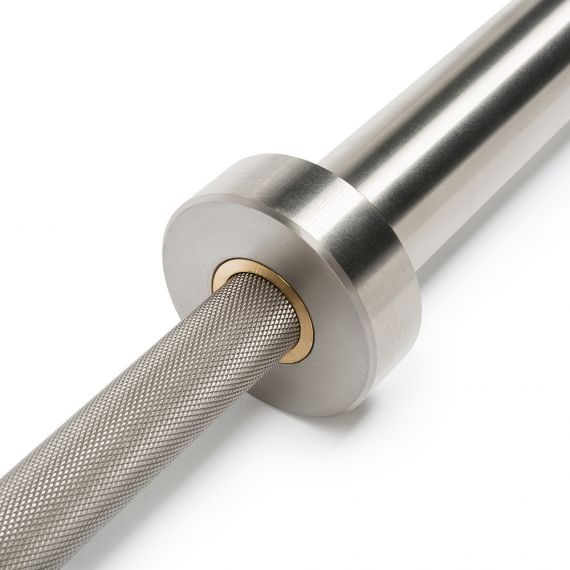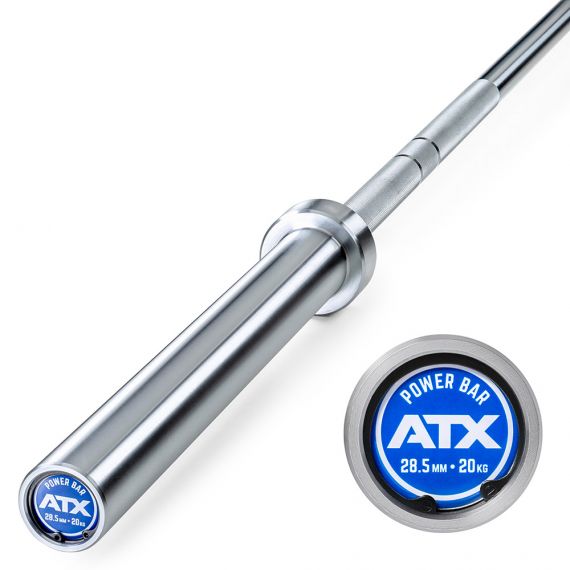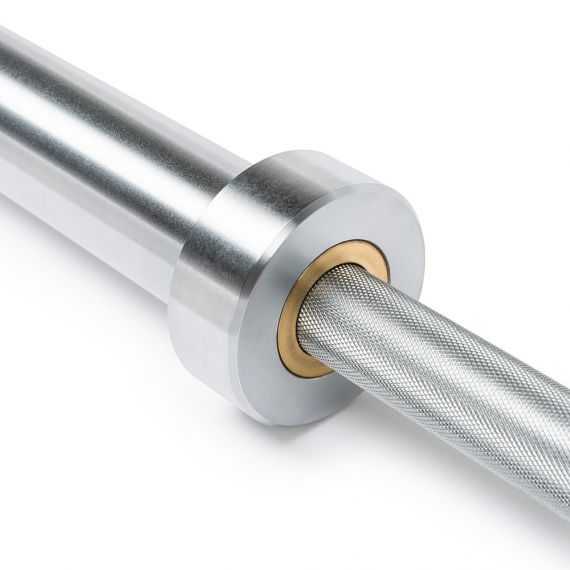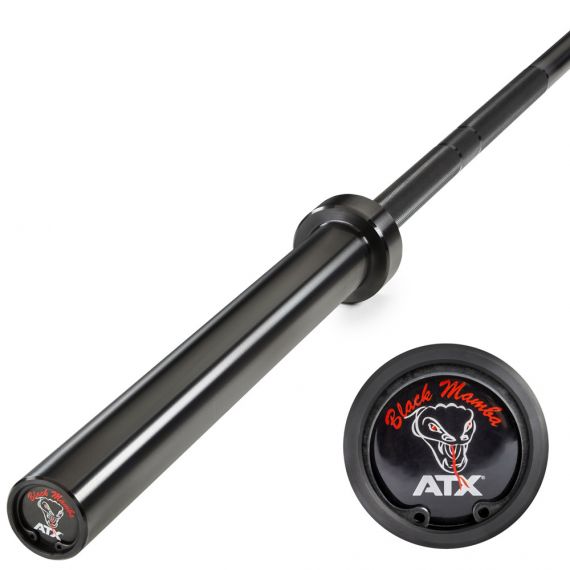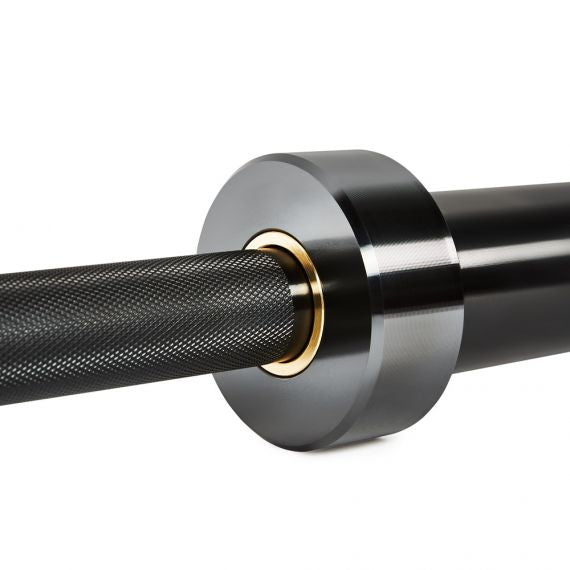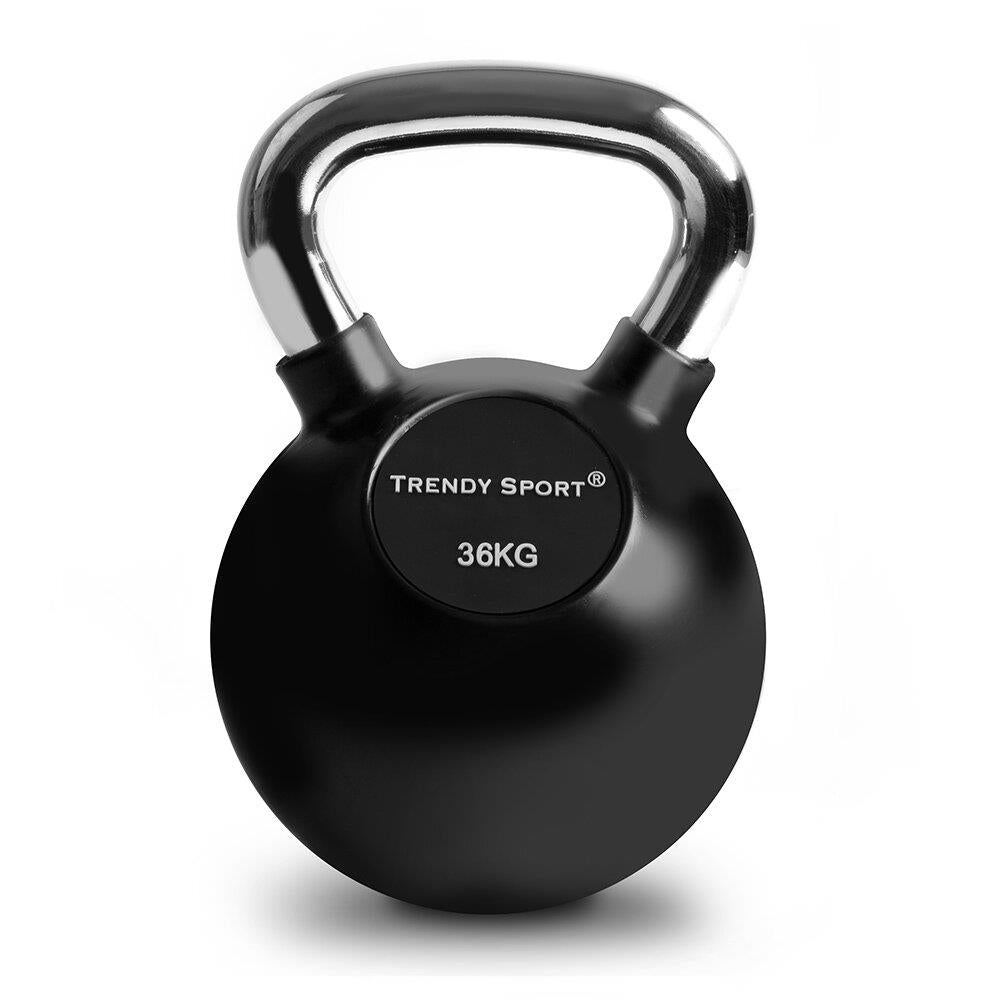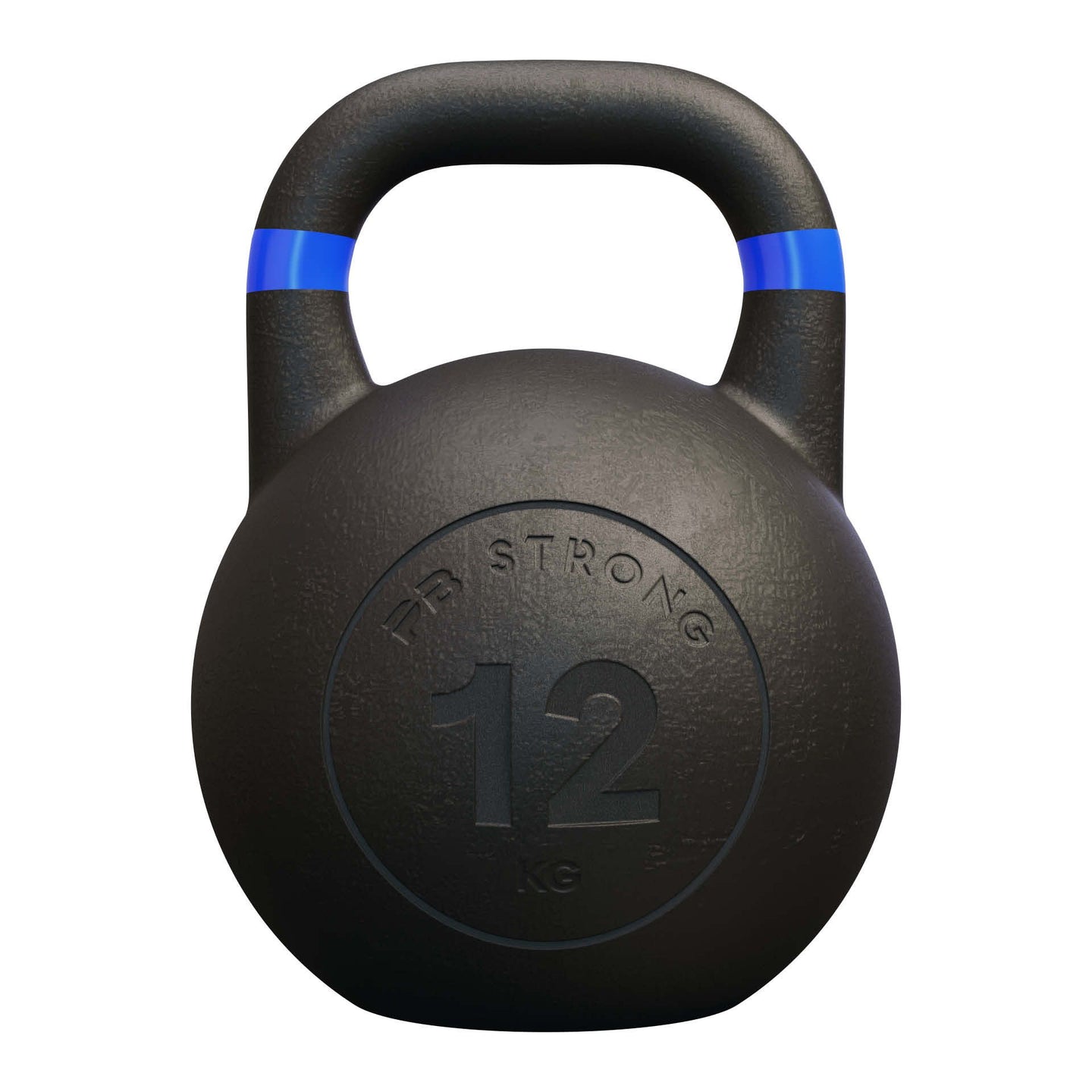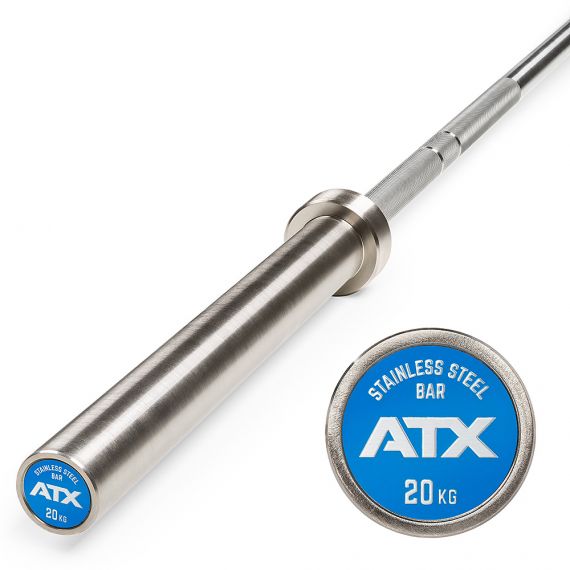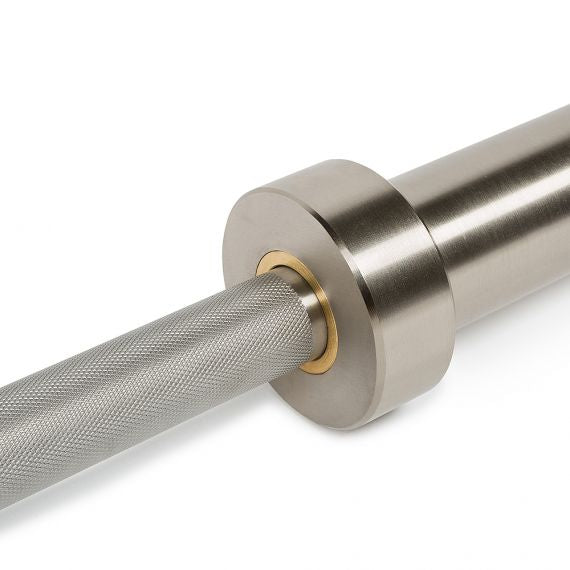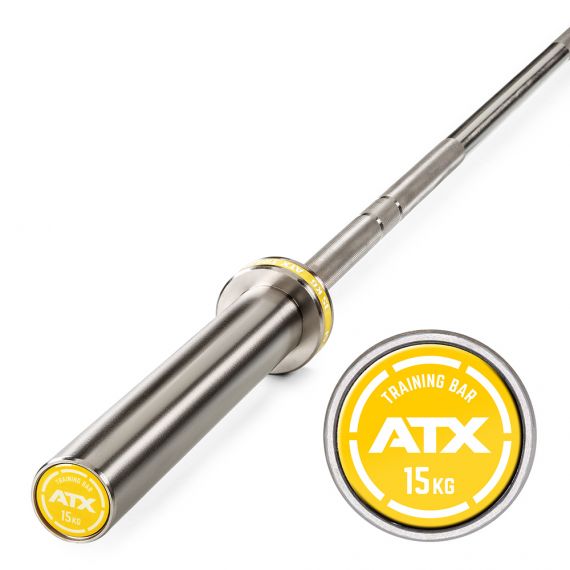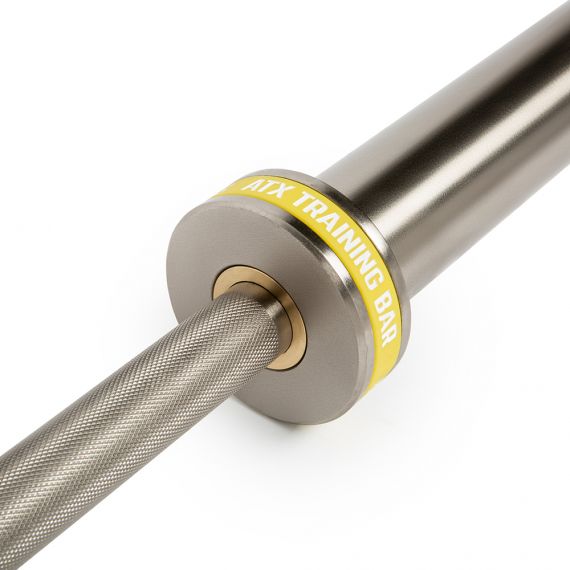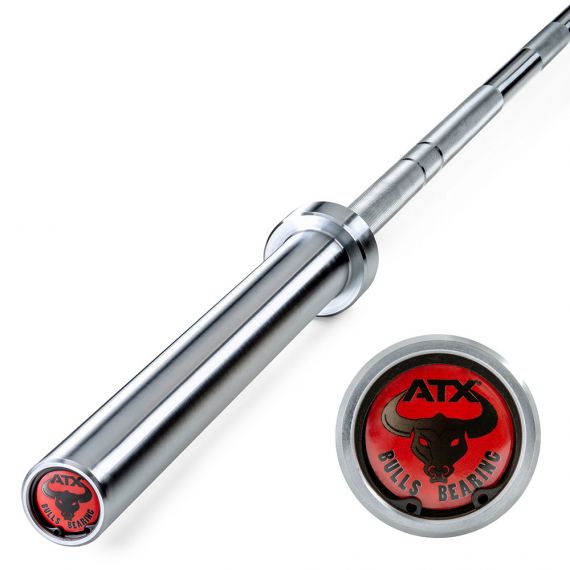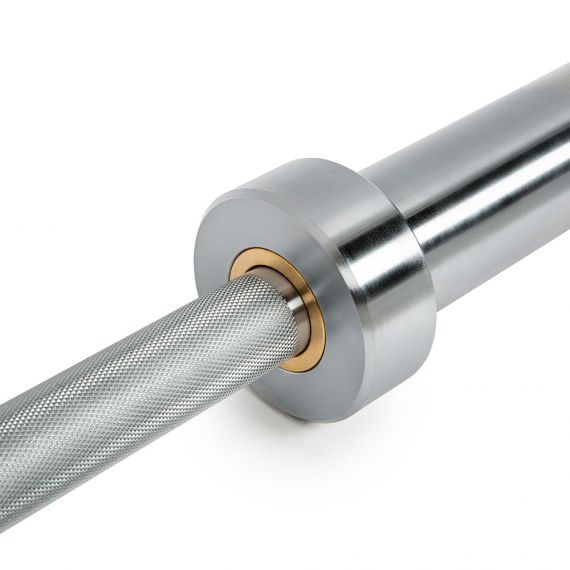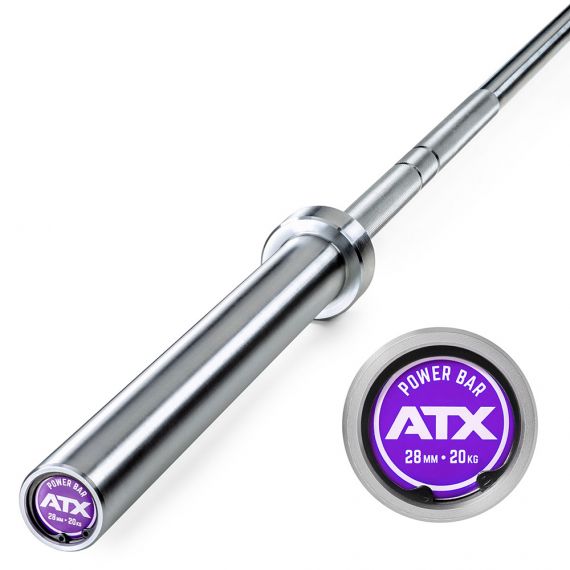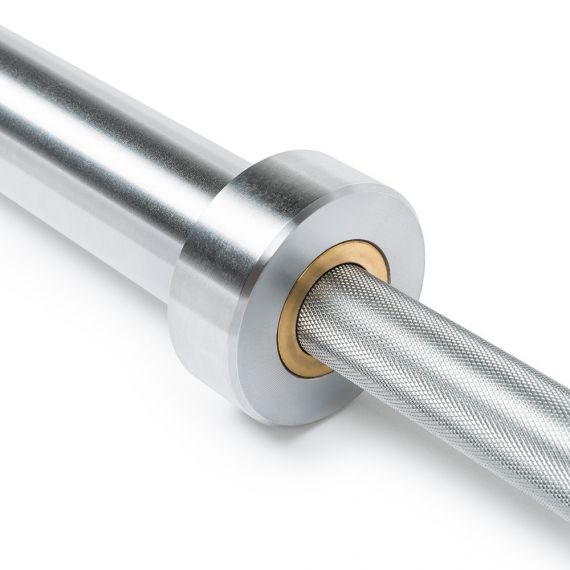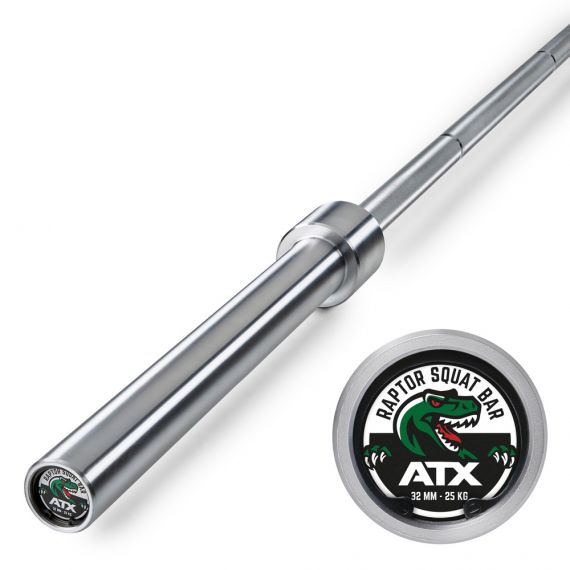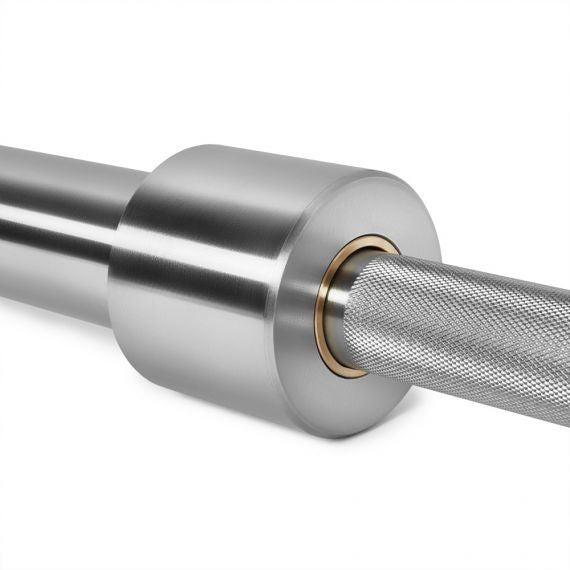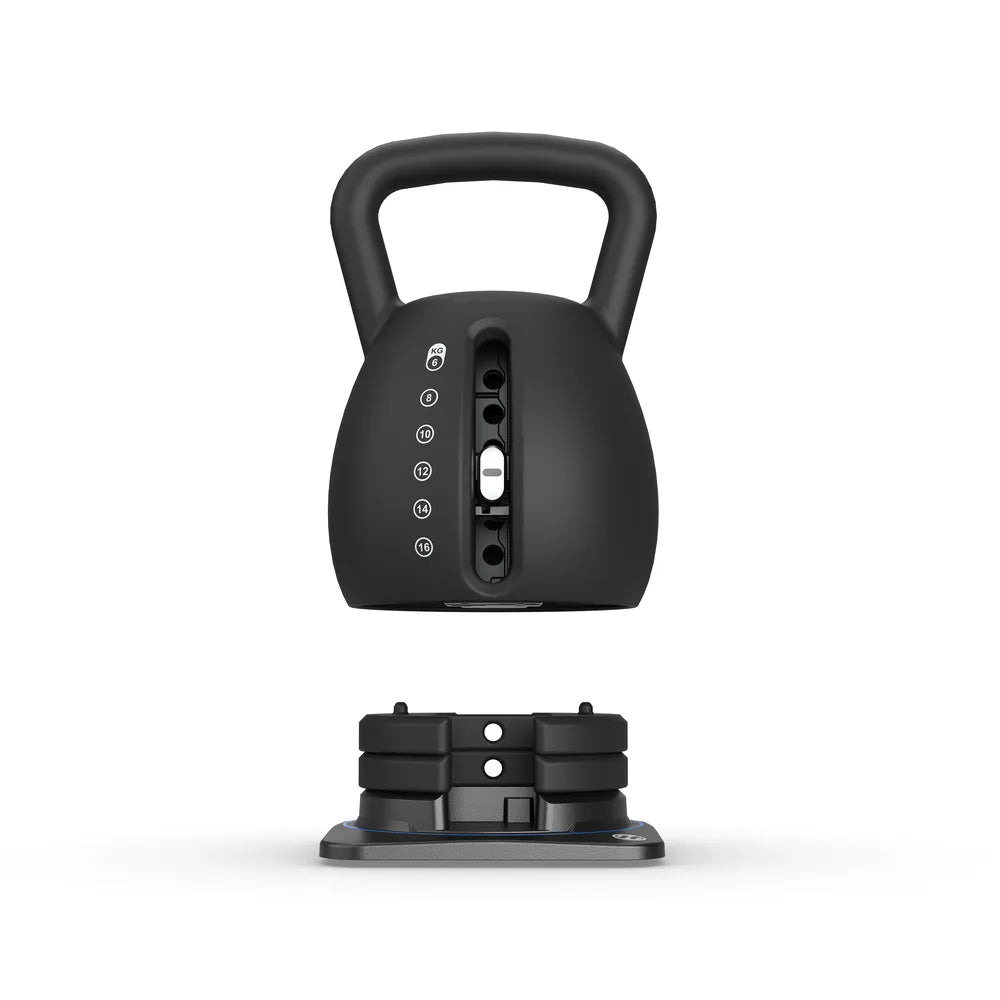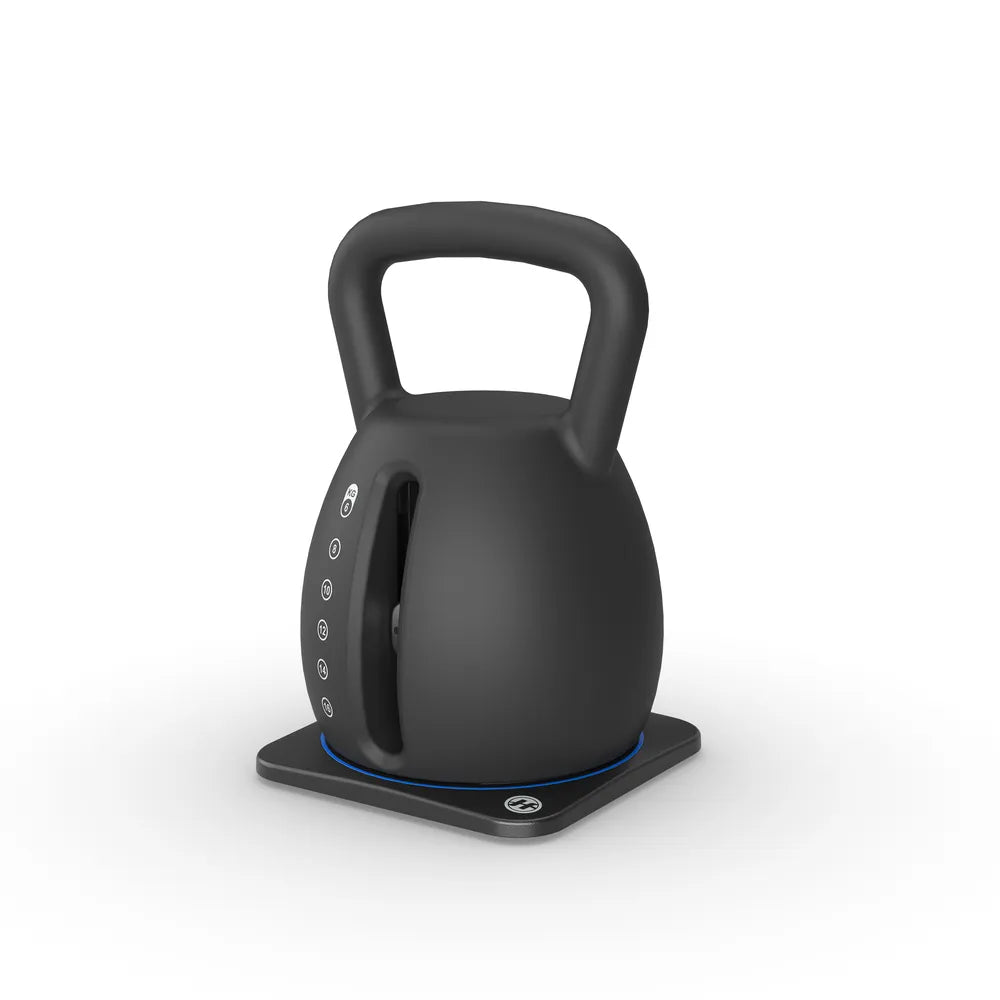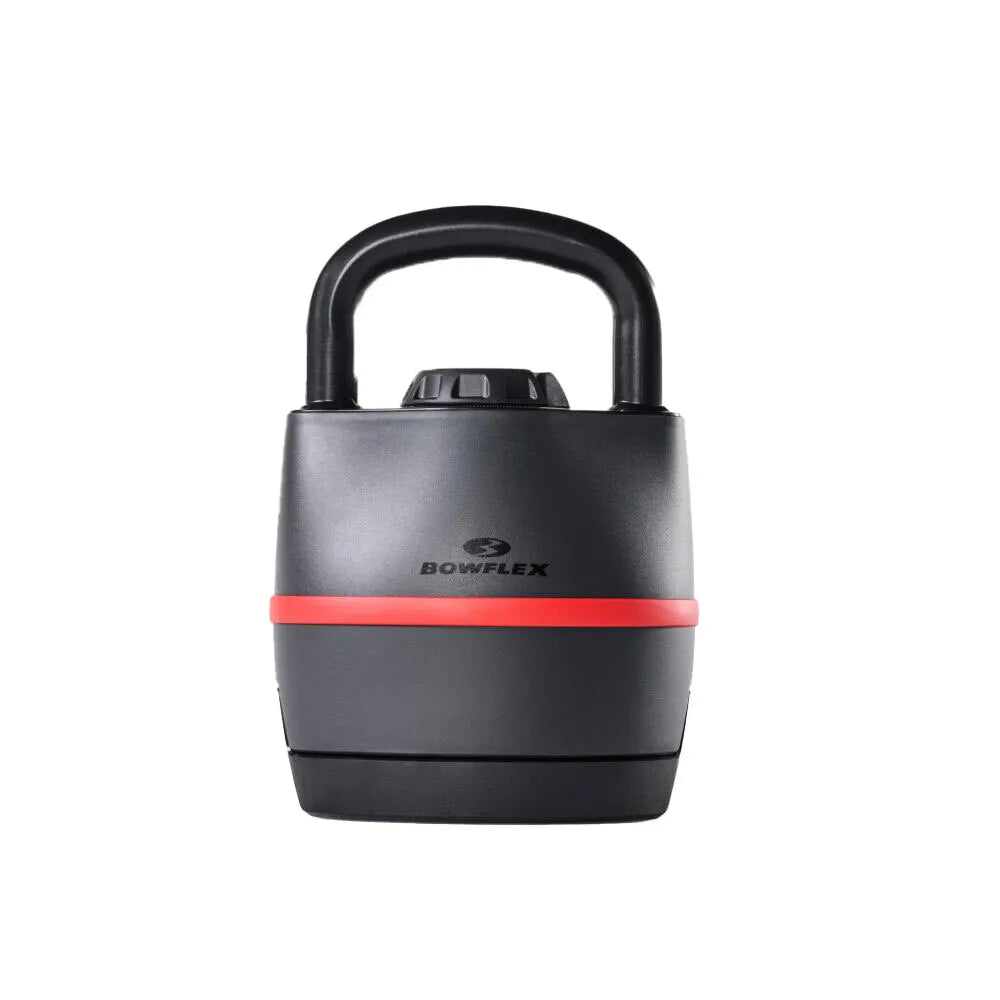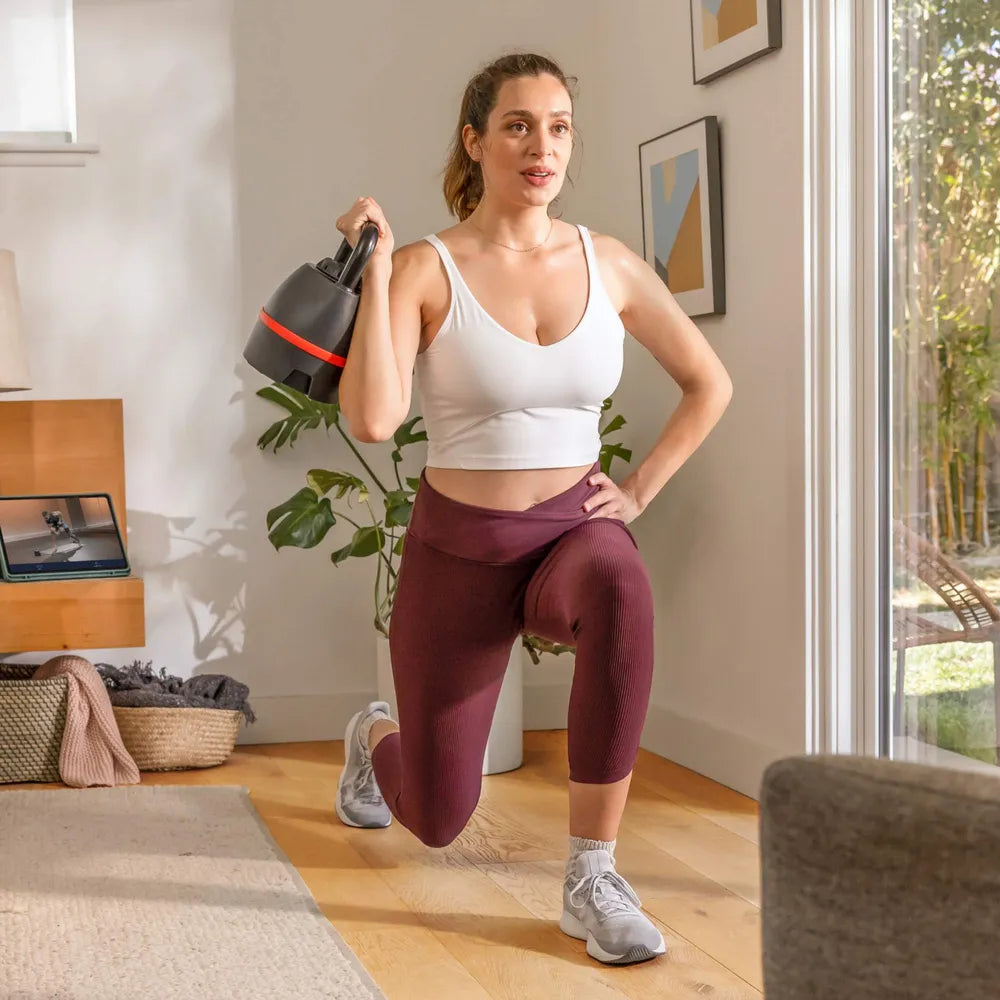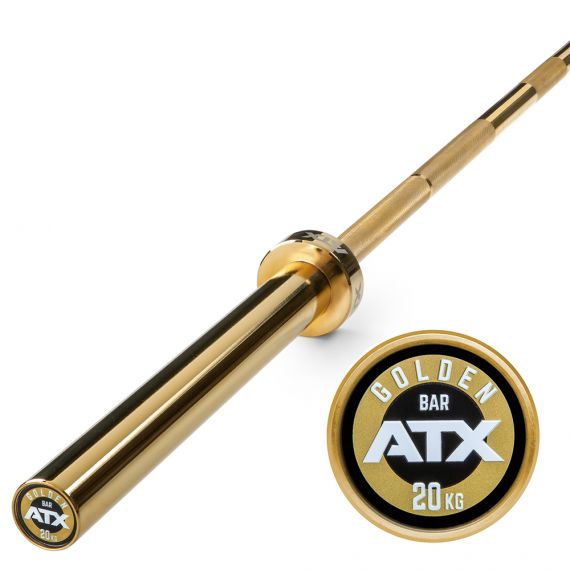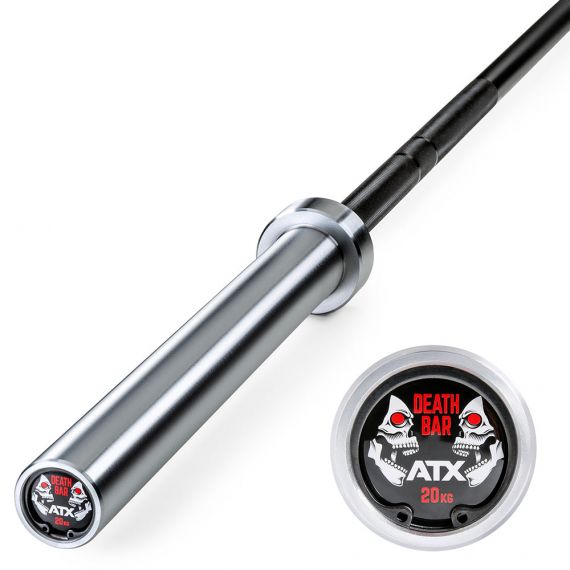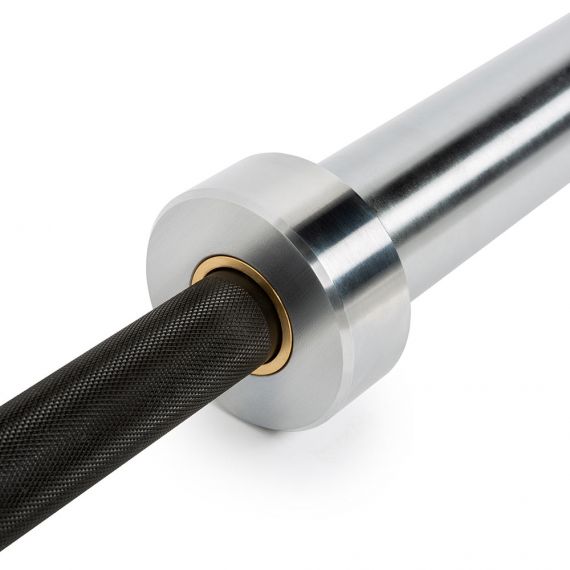Filters
-
Hex Dumbbells Rubber - 1 to 50 kg
Regular price From €3,20 -
Original Russian Kettlebell Competition 8 - 48 kg
Regular price From €34,00 -
CHD Compact Dumbbells Cast Iron - up to 100 kg in 2.5 kg increments - Sold in pairs
Regular price From €40,00 -
Urethane Dumbbells ATX® Dumbbells - 2.5 kg to 60 kg
Regular price From €14,00 -
Hexagon Dumbbells – Dumbbell Sets Rubber 5 to 50 kg
Regular price From €569,00 -
Hex Dumbbell Set Rubber - 1 to 10 kg
Regular price €355,00 -
Original Russian kettlebell cast 28 kg
Regular price €115,00 -
Original Nüobell® 5 to 80 lb (approx. 2.3 - 36 kg)
Regular price €829,00 -
CHD Compact Dumbbell Rubber 2.5 kg Incline
Regular price From €69,90 -
Nüobell® Dumbbell Stand / Floor Stand
Regular price €159,00 -
ATX® High Tensile Pro Bar - 30 mm barbell
Regular price €169,00 -
ATX® Nüobell 2 - 20/ 32/ 36 kg + dumbbell stand
Sale price From €669,00 Regular price€708,00 -
ATX® Training Bar 10 kg
Regular price €149,00 -
ATX® Training Bar 20 kg - Chrome
Regular price €199,00 -
ATX® Nüobell compact dumbbell 2 - 32 kg
Regular price €769,00 -
Nüobell® compact dumbbells 2 - 20 kg
Regular price €549,00 -
ATX® Training Bar 20 kg - Black oxide / chrome
Regular price €199,00 -
ATX® Urethane Dumbbell Complete Sets 5 to 50 kg
Regular price From €959,00 -
ATX® Training Bar 20 kg - Chrome - yellow
Regular price €209,00 -
ATX® Power Bar Chrome + 700 kg - Spring Steel
Regular price €259,00 -
ATX® Competition Powerlifting Bar
Regular price €289,00 -
ATX® Power Bar +700 kg - Spring Steel - Chrome
Regular price €259,00 -
ATX® Power Bar Black Mamba - spring steel
Regular price €269,00 -
Kettlebell Chrome 4 - 36 kg
Regular price From €23,90 -
Competition Kettlebell - PB Strong 8 to 48 kg
Regular price From €59,95 -
ATX® V4A Power Bar / Dumbbell Bar - Stainless Steel
Regular price €429,00 -
ATX® Training Bar 15 kg
Regular price €169,00 -
ATX® Bulls Bearing Bar-MK +700 kg+ Spring Steel + Bearing
Regular price €299,00 -
ATX® Power Bearing Bar 220 cm +700 kg - spring steel - bearing
Regular price €299,00 -
ATX® Raptor Squat Bar Xtreme - 240 CM - 25 KG
Regular price €459,00 -
Kettlebell adjustable 6 to 16 kg - Horizon Fitness
Sale price €299,00 Regular price€349,00 -
Adjustable kettlebell 3.5 - 18 kg - BowFlex
Sale price €239,00 Regular price€259,00 -
ATX® The Golden Powerlifting Bar
Regular price €299,00 -
ATX® Death Bar - Skull motifs
Regular price €259,00
Ordering, delivery & care.
Can I get advice before purchasing?
Yes! Our team will be happy to assist you with your product selection – by phone, email, or in person at our showroom. Together, we'll find the right equipment for your training.
How quickly will the delivery take place?
We deliver quickly and reliably. You can find the exact delivery times directly on the respective product page or during checkout. We're happy to help with any questions about availability.
Will my device be delivered pre-assembled?
Many fitness equipment items are delivered partially assembled. Easy-to-follow assembly instructions are included. Many pieces of equipment can be assembled independently; for more complex items, we recommend a second person. If you require assembly service, please contact us.
How do I properly care for my fitness equipment?
Wipe down moving parts regularly, check screw connections for tightness, and ensure storage in a dry environment. For some devices, occasional lubrication is recommended—you can find information on this in the respective manual.
Not sure which product is right for your training goals? No problem! Our experienced team will take the time to talk to you – by phone (08142/448666), email, or visit our showroom. Together, we'll find the optimal solution for your needs.

Everything you need to know.
Dumbbells FAQ.
Are dumbbells useful at home?
Yes , dumbbells are extremely useful for training at home, as they offer a flexible and space-saving way to incorporate strength training into your daily routine. With dumbbells, barbells, or kettlebells, you can effectively train almost all muscle groups—from the legs and back to the chest, shoulders, and arms. Dumbbells are particularly ideal for a home gym because they require relatively little space and, thanks to variable weights, can be adapted to any fitness level. Whether you're a beginner or an advanced trainer, dumbbells offer you the opportunity to perform a holistic and progressive workout at home.
Can I build enough muscle with dumbbells?
Absolutely , you can build muscle mass in a targeted and effective way with dumbbells. Free training with dumbbells not only works the large muscle groups, but also activates the stabilizing muscles, which are crucial for posture, balance, and functional strength. Unlike with machines, dumbbell exercises force you to actively control the movement, which improves neuromuscular coordination and increases the training effect. Progressive overload is crucial for sustainable muscle building : By gradually increasing the training weights, new growth stimuli are continually created. Dumbbell training is considered by both beginners and experienced athletes to be one of the most effective forms of training for systematically building strength and muscle mass. Thanks to the huge variety of exercises - from classic basic exercises like squats, bench presses , and shoulder presses to isolation exercises like bicep curls or tricep extensions - dumbbells and barbells offer almost unlimited training options.
How do you choose the right dumbbell weight?
The right dumbbell weight depends on your training goal, your experience and your current strength:
- For beginners , it is recommended to start with moderate weights – for example, dumbbells in the 1 to 10 kilogram range. This allows you to learn the correct movement execution without increasing the risk of injury due to overloading. Studies show that, especially in the first few weeks of training, neuromuscular control and the development of correct technique are crucial for long-term training success. Lighter to medium weights allow you to improve exercise control, activate the stabilizing muscles, and simultaneously build a solid
To create a basis for future increases. - Advanced athletes should choose weights with which
they can perform approximately 8 to 12 technically sound repetitions per set. This repetition range is considered optimal in training science for
Hypertrophy , i.e. targeted muscle building. In this intensity range, the fast-twitch type II muscle fibers are activated, which
are largely responsible for muscle growth and strength gain.
At the same time, the load allows sufficient mechanical tension and metabolic stress to be generated – two of the crucial factors for effective muscle building. - Lighter weights combined with higher repetitions are particularly effective for improving muscular endurance and toning the body. Studies show that 15–20 repetitions per set with moderate weight primarily target the so-called type I (slow-twitch) muscle fibers, which are responsible for endurance and long-term load capacity. At the same time, higher-volume training promotes calorie burn, supports muscle definition, and improves blood flow (capillarization) in the muscles.
- For targeted muscle building and increasing maximum strength, heavier dumbbells are required, pushing you to your limits in the range of approximately 6 to 10 repetitions per set . In this intensity zone, high mechanical tension is exerted on the muscles, which is proven to be one of the most important factors for hypertrophy and strength development. At the same time, the fast-twitch type II muscle fibers, which are responsible for explosive power development and significant muscle growth, are maximally challenged. This principle – known as
progressive overload training – forms the basis for long-term
Performance improvements.
Are kettlebells better than dumbbells?
Whether kettlebells or dumbbells are the better choice depends on your individual training goals and training style .
- Kettlebells are particularly well-suited for functional training, dynamic swing exercises , and full-body workouts. They specifically promote explosive power, coordination, and cardiovascular endurance , as many exercises engage multiple muscle groups simultaneously and require quick movements.
- Dumbbells, on the other hand, are particularly versatile and ideal for classic strength training and targeted muscle building. They allow for precise loading of individual muscles, controlled movement sequences , and a systematic increase in training intensity.
For a complete home gym, a combination of kettlebells and dumbbells can be useful, as this covers both functional fitness and targeted muscle building. However, those primarily looking to build muscle mass and strength will benefit more from training with dumbbells.
What are the advantages of dumbbells compared to barbells?
Dumbbells offer numerous advantages over barbells, especially for training at home:
- Greater freedom of movement : Each side of the body works independently, correcting muscular imbalances and improving neuromuscular coordination.
- Increased exercise variety : In addition to classic basic exercises such as squats, bench presses or shoulder presses, dumbbells can also be used to perform numerous isolated exercises in order to precisely train individual muscle groups.
- Space-saving and flexible: Dumbbells require significantly less space than barbells including a weight bench, making them ideal for home gyms.
Barbells, on the other hand, are advantageous when very heavy weights need to be moved, for example in deadlifts, bench presses or other basic exercises that require maximum load.
What are the benefits of 3 kilos of dumbbells?
Dumbbells weighing 3 kilograms are particularly suitable for beginners, rehabilitation training, seniors, or for fitness workouts such as aerobics, Pilates, and light strengthening exercises. They specifically support muscle toning, promote mobility , and provide greater training variety . However, 3-kg dumbbells are too light for the targeted development of muscle mass in the sense of visible hypertrophy; in the long term, the weight should be increased gradually to ensure sufficient training stimulus.
Nevertheless, 3 kg dumbbells are a useful addition for warm-up sessions, endurance exercises , or the activation and stabilization of deeper muscles.
Buy dumbbells - Get stronger with motion sports
Dumbbells are among the most versatile and effective pieces of fitness equipment available. Not only are they compact and versatile , they also enable training that simultaneously improves strength, stability, and coordination. Unlike machines that force a predetermined movement, dumbbells train muscles in a natural motion sequence while simultaneously activating the stabilizing deep muscles . Training with dumbbells improves body awareness, mobility, and total-body strength and is essential for both beginners and professionals.
At motion sports Fitness Equipment, you'll find a wide selection of dumbbells: dumbbells , barbells , weight plates , kettlebells , and adjustable dumbbells . These allow you to effectively train all muscle groups—whether at home or in the gym.
Why dumbbells are indispensable
Dumbbells enable training that specifically promotes functionality, strength building, and mobility. Unlike weight machines, which force you to follow predetermined movement sequences, dumbbells train your muscles naturally while simultaneously activating the stabilizing muscles that are crucial for balance, coordination, and body control. Furthermore, dumbbell training is extremely flexible and individually adaptable. You determine the weights you use and the number of repetitions you perform. This allows each session to be optimally tailored to your fitness level and training goals. Dumbbells therefore form the ideal foundation for effective, varied, and holistic strength training.
Discover dumbbells - which one is right for me?
Choosing the right type of dumbbell depends on your training goal, fitness level, and space available. Each type of dumbbell offers individual benefits and uses that are relevant for both beginners and advanced users.
Dumbbells – versatile and flexible: Dumbbells are among the most flexible training tools available. They are suitable for both isolated exercises like bicep curls, tricep extensions, or shoulder raises, as well as complex movements that work multiple muscle groups simultaneously, such as lunges, goblet squats, or shoulder presses. A major advantage of dumbbells is the ability to train each side independently, which can help correct muscle imbalances. In addition, many models are rubberized or coated with neoprene, which protects the floor, reduces noise, and increases the durability of the dumbbells. Dumbbells are therefore particularly suitable for the home gym because they are space-saving, versatile, and easy to handle.
Barbells – the foundation for compound exercises and muscle building: Barbells are the core of any strength training program, especially for building muscle and increasing maximum strength. They are used for compound exercises such as squats, deadlifts, bench presses , and shoulder presses. Using barbells allows for heavier weights to be lifted, placing greater strain on the muscles. Barbell exercises also activate large muscle groups simultaneously and promote overall body stability. The coordination requirements are greater than with machine exercises because the load itself must be stabilized. Training with barbells is therefore particularly functional, as it improves strength, balance, and movement coordination simultaneously.
Kettlebells – dynamic and functional: Kettlebells combine strength training, endurance, and coordination in a single training device. Typical exercises like kettlebell swings , Turkish get-ups , or clean & press engage the entire body and promote explosive power, mobility, and core stability . Thanks to the spherical design with handle, the dumbbell can be easily swung, swayed, or rotated, placing dynamic stress on the joints and activating the muscles in different ways. Kettlebells are therefore ideal for functional training, HIIT workouts, or for athletes who want to improve strength, coordination, and endurance simultaneously.
Adjustable dumbbells – space-saving and flexible: Adjustable dumbbells are particularly suitable for home gyms with limited space. They replace a complete set of dumbbells, as the weight can be quickly adjusted using a rotating system . This allows you to cover different training intensities with just one pair of dumbbells. Adjustable dumbbells offer the advantage of being able to train with both light and heavy weights. They are ideal for athletes who need progressively increasing loads without having to buy multiple dumbbells or sacrificing a lot of storage space.
Dumbbell training vs. multi-gyms
Training with free weights is fundamentally different from training with weight machines. While weight machines offer guided movements with a predetermined direction, weight training relies on free movement and natural leverage . This freedom activates not only the target muscles but also the stabilizing muscles responsible for balance, coordination, and body control. Studies show that free weights activate more muscle fibers than machines because the body must simultaneously exert force and control the movement.
Benefits of weight training
- Functional strength development : Dumbbells enable training that specifically activates muscle chains that are actually needed in everyday life or during sports. Exercises like squats, lunges, or rowing with dumbbells efficiently transfer the applied force to real-life movements. This not only increases pure muscle strength but also improves movement economy , making everyday activities easier and athletic performance more effective.
- Activation of the stabilizers : A key advantage of weight training is the free movement of the weights. Because the body has to stabilize the load itself, small, often neglected muscles responsible for joint stability, posture, and balance are particularly activated. This reduces the risk of injury and improves functional strength beyond isolated muscle work.
- Flexibility and customization : Weight training is extremely flexible and individually adaptable. You decide what weight you use, how many repetitions you perform, and at what pace you train. This variability allows you to tailor your training precisely to your needs. By adjusting the weight, number of repetitions, and movement sequence, continuous training progress is guaranteed.
- Natural movement sequence : Unlike weight machines, weight training allows you to perform movements in all three dimensions. Machines are usually limited to linear movements, which reduces the functional load on the muscles. Weights, on the other hand, promote natural movement coordination, train the joints, and activate multiple muscle groups simultaneously—a crucial advantage for functional fitness.
- More variety and creativity : Dumbbells make it easy to add variety and creativity to your workout. Dumbbells, barbells, or kettlebells allow for different grip types, angles of movement, and exercise variations . This variety not only increases muscle growth and strength development but also improves coordination, flexibility, and motivation. This makes each training session efficient, varied, and designed for long-term success.
Practical tips for optimal dumbbell use
I. Technique before weight : A fundamental principle of weight training is: technique before weight. Beginners, in particular, should start with lighter dumbbells to learn the movement patterns correctly . Proper form is crucial for effectively training the target muscles and avoiding injury. Only when the movement can be performed with control and stability should the weight be increased.
II. Progressive loading : The key to lasting muscle building and strength improvement lies in progressive loading. This means gradually increasing the training weight as soon as the last repetition of a set is still possible cleanly and with control. This progressive increase ensures that the muscles are continuously challenged, promoting growth and adaptation without compromising form.
III. Whole-body integration : Effective weight training should involve the entire body. Combining exercises for the legs, core, and upper body activates functional muscle chains and improves stability. For example, squats or lunges with dumbbells simultaneously train the legs, core, and balance, while rowing or shoulder presses strengthen the upper muscle groups. This creates a balanced and functional strength training program.
IV. Combination with machines : Machines can be particularly useful for beginners or rehabilitation patients, as they stabilize movements and specifically target isolated muscle groups. Weight training is an ideal complement to machine exercises, as it additionally activates stabilizers, improves coordination, and promotes functional strength. Combining both training methods creates a balanced strength training program that combines safety, effectiveness, and versatility.
V. Variations : To achieve long-term progress, dumbbell training should be varied. Different grip widths, angles of movement, and exercise variations ensure that the muscles are stressed in a variety of ways. This variation not only increases the training effect but also prevents plateaus, promotes coordination, and maintains motivation. Examples include alternating between dumbbells, barbells, or kettlebells, as well as variations in grip types, angles, and tempo of the movement.
How many kg of dumbbells as a beginner?
As a beginner, choose a weight that allows for technically sound repetitions and noticeably challenges you in the last 2–3 reps. A good starting point is to use RIR (reps in reserve): Choose a weight that leaves 1–2 reps left in the tank after the set (RIR 1–2). This provides an effective stimulus without losing your form. The following is a rough starting point:
- Women : approx. 1 – 10 kg per dumbbell
- Men : approx. 5 – 20 kg per dumbbell
These ranges are only guidelines. The exercise itself is more relevant: Small muscle groups (e.g., shoulders during lateral raises) can tolerate significantly less load than large ones (e.g., legs during goblet squats). Practical guidelines (beginners, technically sound, 8–12 reps):
Which are the best dumbbells?
“The best dumbbells” are those that fit your goal, budget, space, and training style.
Home gym and limited space: Adjustable dumbbells (dial/selector system). They replace many pairs, allow for quick weight changes, and are ideal for full-body training. Pay attention to the changeover speed, maximum weight, grip (knurling), and drop suitability.
Classic muscle building and basic exercises: barbell ( Olympic bar ) + weight plates . Maximum progression in squats, bench presses, and deadlifts. Dumbbells are also used (especially for unilateral/balancing training).
Functional/HIIT/athletic goals: Kettlebells (swings, cleans, snatches, Turkish get-ups). Promotes explosive power, core stability, and conditioning.
Studio/professional requirements : Rubberized hex dumbbells (robust, won't roll away, and gentle on the floor), high-quality barbells with the right pull/bend properties (whip), and bumper plates for safe landing. Quality features to look out for:
1. Handle and knurling: secure, not sharp, good grip even with sweat.
2. Coating: rubber/PU for floor protection, hard chrome plating/black zinc for corrosion protection.
3. Shape: Hex dumbbells don't roll, round ones are often more compact.
4. Mechanics of adjustable dumbbells: solid locking mechanism, quick change, sufficient maximum weight (at least 20–25 kg per side for progression).
What is the perfect weight for dumbbells?
There's no such thing as a "perfect" weight—it depends on your goal, the exercise, and your current form. Relative effort (close to muscle failure, with proper technique) is crucial. The repetition ranges determine your training focus:
8–12 repetitions → muscle building (hypertrophy)
15–20 repetitions → strength endurance
3–6 repetitions → maximum strength
Choose the weight so that you end up in your target rep range with an RIR of 0–2 (0–2 reps in reserve). A wide range (approximately 5–30 reps) works for hypertrophy, as long as the effort is high and the movement quality is good.
Exercise-dependent weight orientation
1. Large muscle groups/multi-joint (legs, back, chest): higher loads tolerated.
2. Small muscle groups/single joint (shoulders, biceps, triceps): moderate to light.
3. Overhead and unstable (e.g. standing shoulder press): choose something more conservative.
Progression in practice can be implemented very effectively using the so-called double progression model. This involves gradually increasing the number of repetitions within a set repetition range – for example, 8 to 12 repetitions. Once the upper limit has been reached in a controlled and technically correct manner, the next step is a moderate increase in training weight , for example by 1 to 2 kilograms. You then start again at the lower end of the repetition range and repeat the process. In addition to this classic method, micro-loading is also an option, in which very small weight increases of 0.5 to 1 kilogram are used to ensure continuous progress. Progression can also be achieved through qualitative factors – for example, by performing movements more slowly (tempo training) or deliberately expanding the range of motion . This ensures that the muscles are constantly exposed to new stimuli without neglecting proper technique.


